

Florida Currents
GULF
COAST ELECTRIC COOPERATIVE









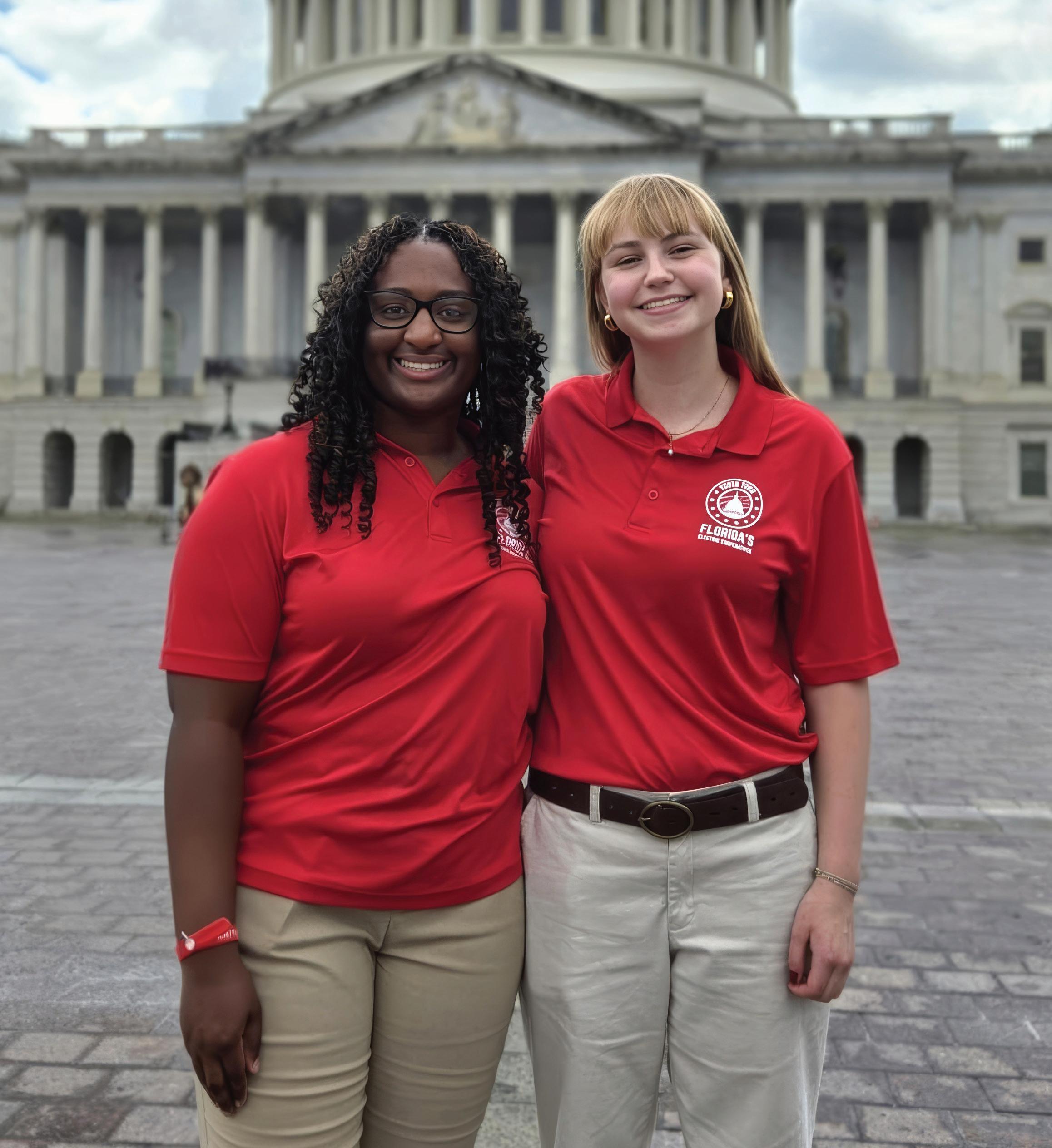
Kelsey Fields, left, and Izzie Shealy represent Gulf Coast Electric Cooperative in June during the annual Electric Cooperative Youth Tour. Read more on Page 4.
“

Florida Currents
August 2025 • Volume 14, No. 10
CEO Michael Shepard
SENIOR VP OF CONTENT Leon Espinoza
EDITORIAL DIRECTOR Chasity Anderson, CCC
DEPUTY EDITORIAL DIRECTOR
Noble Sprayberry
SENIOR EDITOR Jennifer Paton, CCC
FLORIDA CURRENTS EDITORS
Valeri Saldanha Rosa; Sable Riley, CCC
ASSISTANT EDITORS Victoria Hampton, CCC; David Herder, CCC
ASSOCIATE EDITOR
Nina Todea
PUBLICATIONS PRODUCTION
SENIOR MANAGER
Elizabeth Beatty
SENIOR PUBLICATIONS COORDINATOR
Alyssa McDougle
Members acknowledge that $4.49 a year, plus postage, is the cost to publish 12 issues a year of FLORIDA CURRENTS ISSN 23276304 (USPS 8300). Published by Pioneer Utility Resources Inc., 5625 NE Elam Young Parkway, Suite 100, Hillsboro, OR 97124—a not-for-profit Oregon cooperative corporation—the magazine serves the communication needs of consumerowned electric utilities in Florida. Preferred Periodicals postage paid at Hillsboro, OR 97123 and at additional mailing offices.
Postmaster: Send address changes to 5625 NE Elam Young Parkway, Suite 100, Hillsboro, OR 97124-6422.
HOW TO CONTACT FLORIDA CURRENTS
Subscription services:
Nonmember subscriptions $15 U.S. a year; $25 foreign a year. Prepayment required. Allow 4-8 weeks for first issue. Identify local edition desired. Have a problem receiving your magazine? Utility members should contact their utility office. Nonmembers call 503-357-2105 or email mailingdept@pioneer.coop. Back issues:
Back issues and extra copies are $3 each, prepayment required. Supply is limited. Identify edition, month and year. Call first to check availability. Contact Pioneer Utility Resources: P.O. Box 1306, North Plains, OR 97133-1306; 503-357-2105; email: mailingdept@pioneer.coop.
DISPLAY ADVERTISING INQUIRIES
American MainStreet Publications 611 S. Congress Ave. Suite 504 Austin, TX 78704-1714; 800-626-1181 or 512-441-5200; amp.coop.
© 2025 Pioneer Utility Resources. All rights reserved. Reproduction in whole or in part without written permission is prohibited. Direct reprint requests to editor@floridacurrents.com or for more information, visit www.pioneer.coop.
For additional content, search @FloridaCurrents on your favorite social media sites and floridacurrents.com.

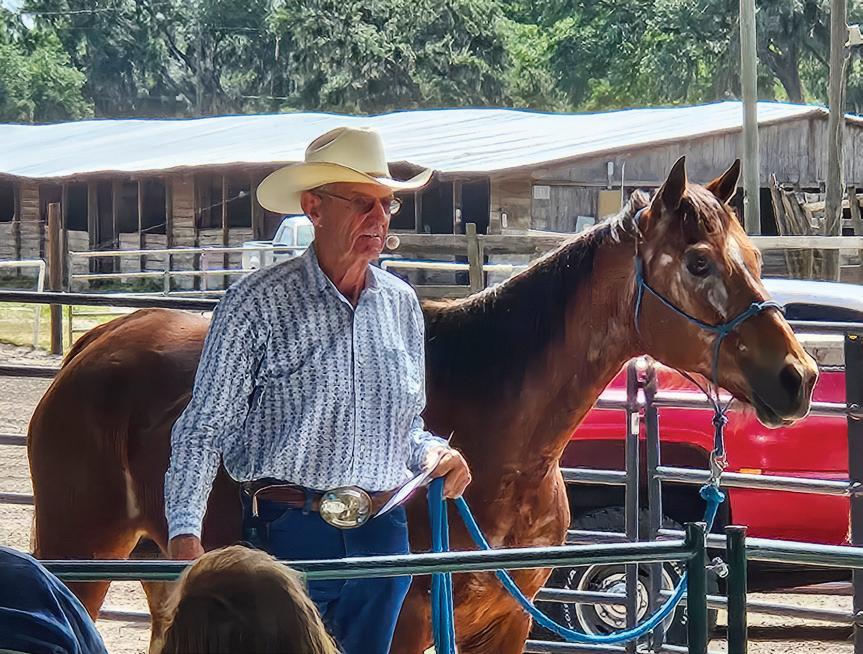


Trip GCEC Students Enjoy



Lifetime of a
Local teens join national Youth Tour in Washington, D.C.
Two Panhandle students saw monuments, museums and more on a once-in-a-lifetime adventure to the nation’s capital.
In June, rising seniors Kelsey Fields, of Bay High School, and Izzie Shealy, of Wewahitchka High School, traveled to Washington, D.C., for the Electric Cooperative Youth Tour. The two won Gulf Coast Electric Cooperative’s annual Youth Tour contest.
The cooperative sponsors the contest for 11th grade students whose parents or guardians are GCEC members. A panel of three judges from the electric cooperative industry interviews contestants. Judges choose two winners for the all-expenses-paid trip, joining more than 2,000 youth delegates, chaperones and staff representing 44 states.
The action-packed week included visits to iconic sites such as the Franklin D. Roosevelt, Martin Luther King Jr., World
War II, Korean War, Lincoln and Vietnam War memorials. Students enjoyed a professional baseball game, a boat cruise on the Potomac River, and tours of the 9/11 Memorial, National Cathedral, Arlington National Cemetery, Mount Vernon, the National Archives, the Udvar Hazy Air & Space Museum, the Museum of African American History, the Museum of American History, the Holocaust Museum, the Natural History Museum, The People’s House and the Library of Congress.
Delegates participated in a co-op 101 and advocacy workshop to learn about the electric cooperative model and how co-ops serve their communities.
On June 19, Youth Day featured remarks from several speakers, including National Rural Electric Cooperative Association CEO Jim Matheson and NRECA President Mike Partin. Delegates

GCEC delegates Kelsey Fields, left, and Izzie Shealy tour historic sites, such as the WWII Memorial, during the Electric Cooperative Youth Tour.

heard from motivational speaker and Paralympian Mike Schlappi, along with Youth Leadership Council spokesperson Maggie Martin.
A career panel featured several Youth Tour alumni who found success in media and politics. Panelists included Anneliese Taggart, a Vatican correspondent; Sara Schafer, editor of Rural Missouri magazine; and Pennsylvania state Rep. Jeremy Shaffer. Each shared how their Youth Tour experiences helped shape their career paths.
On June 20, Co-op Connections Night introduced students to potential career opportunities within the electric cooperative world. Representatives from NRECA, Touchstone Energy Cooperative and regional co-ops engaged with students and answered questions.
“We were proud to have Kelsey and Izzie representing Gulf Coast Electric Cooperative in Washington,” says Kristin Douglas, GCEC vice president of marketing and communications. “Over and over again, the Youth Tour trip has been referred to as the trip of a lifetime, and we hope it truly was for these exceptional students.”
The Electric Cooperative Youth Tour started in 1957, when co-ops across the country sent students to Washington, D.C., to work and learn about the government over summer. By 1964, the National Rural Electric Cooperative Association began coordinating the effort. Since then, thousands of young people have visited our nation’s capital through this educational experience.
Kelsey and Izzie stop for a photo in front of the White House, one of many highlights from the trip.
HANDS-ON LEARNING,
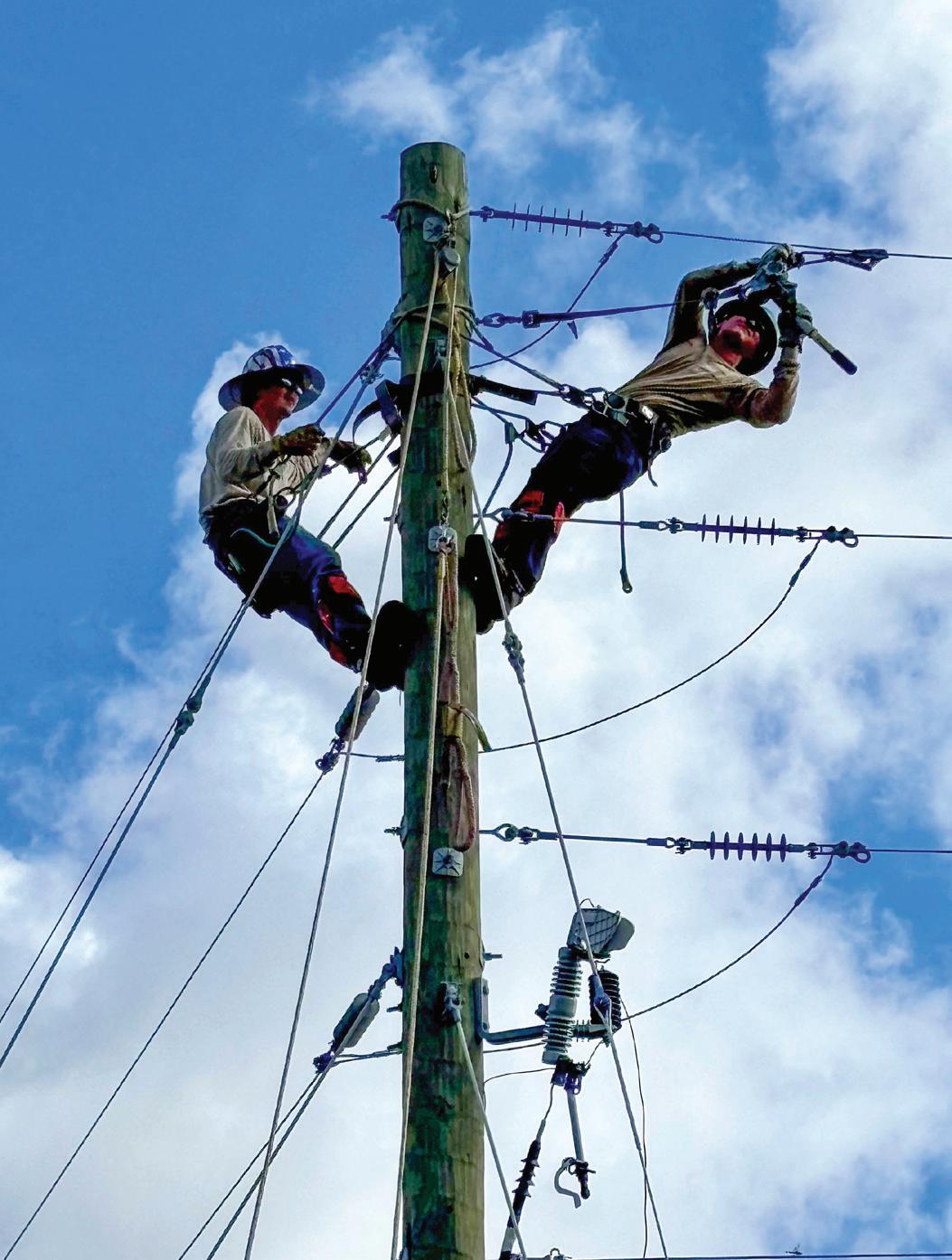
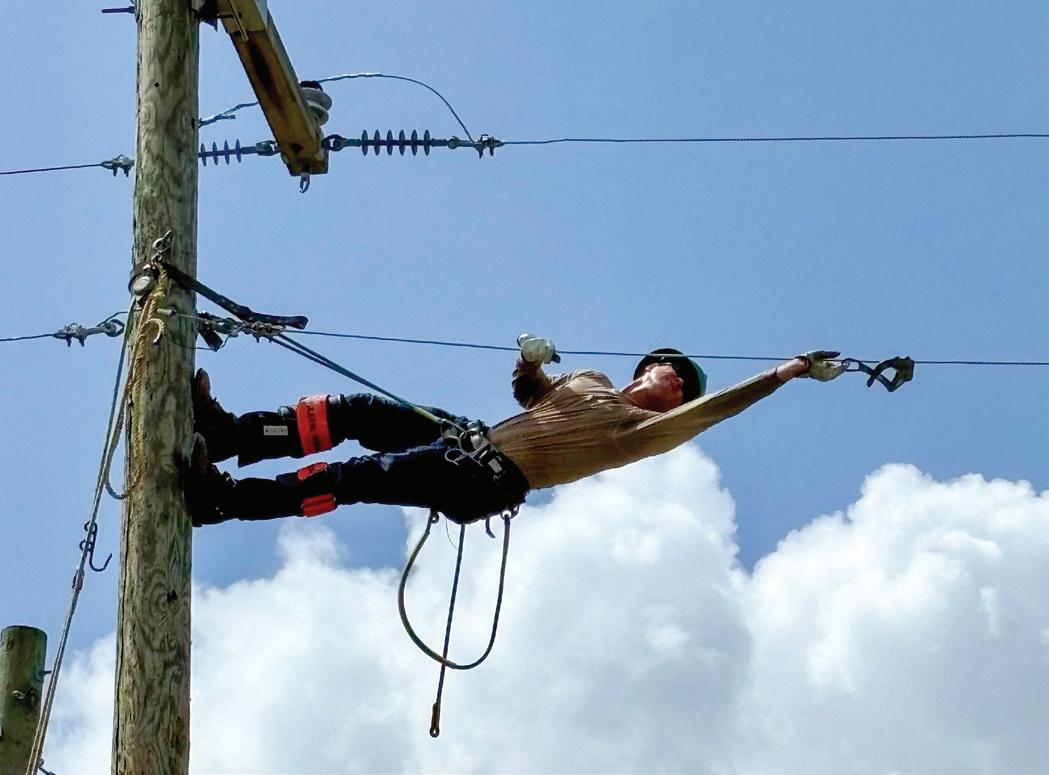
Training program teaches proper construction and safety procedures
Gulf Coast Electric Cooperative apprentices attend training through the Tennessee Valley Public Power Association, working toward certification as line technicians through TVPPA’s Line Technician Apprenticeship Training Program.
The program includes four correspondence courses, three on-site climbing, construction and operations laboratories, and four years of on-the-job training under the supervision of a lead line technician.
The correspondence courses involve independent study in math, electricity and the fundamental principles of alternating current—all critical building blocks for understanding the technical aspects of the trade. Apprentices learn about the tools and equipment used in daily operations, as well as key applications, such as stringing and sagging wire, underground distribution systems, transmission and distribution line maintenance, transformer connections, meter applications, substation operations, and phasing and measuring voltage and current.
The hands-on labs allow students to apply knowledge gained in the coursework. Participants learn essential skills like knot-tying and safe climbing, as well as performing pole-top rescues—all vital for overhead line construction. They build and frame lines to specifications, practice grounding techniques and prepare stress cones for underground cable.
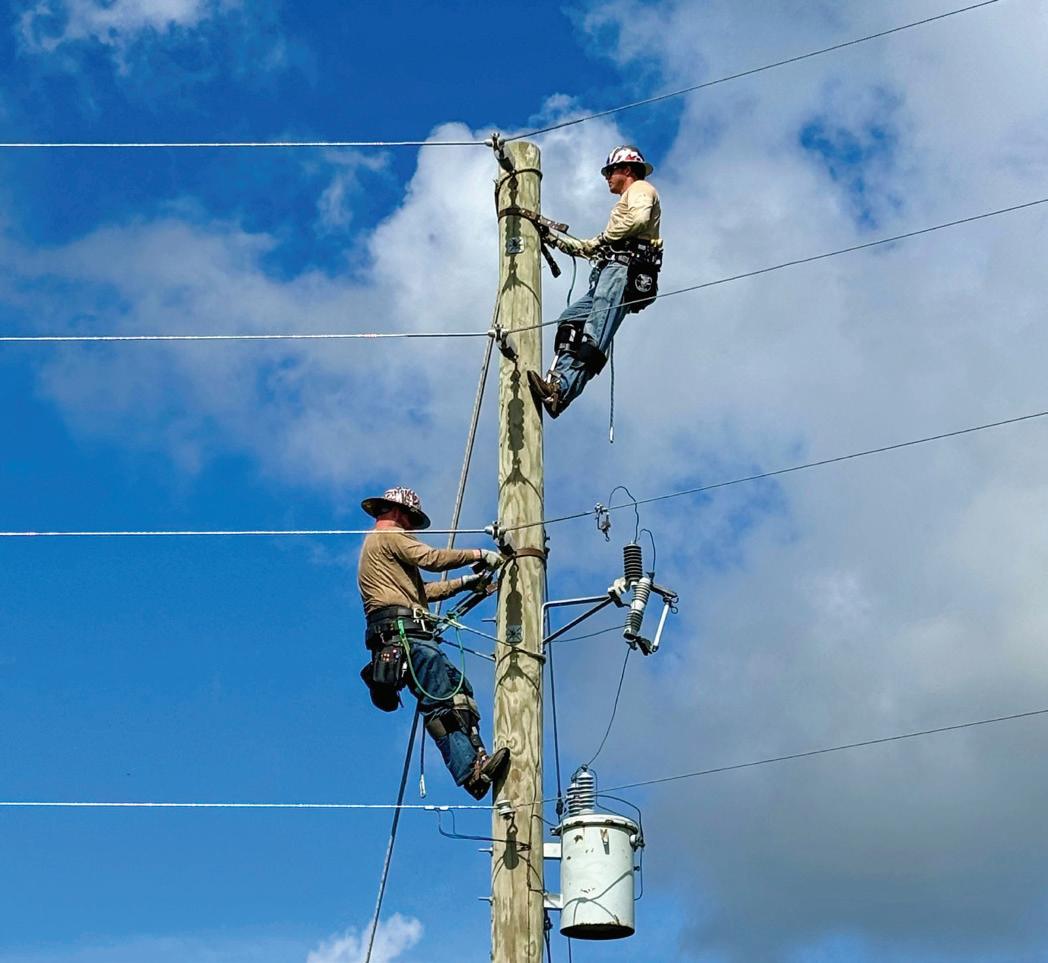
Gulf Coast Electric Cooperative apprentices train in the co-op’s yard between official Tennessee Valley Public Power Association program sessions. Safe climbing techniques are essential to restore power in areas bucket trucks cannot access.
HIGH-STAKES SKILLS
Additional instruction includes job briefings, basic troubleshooting of overhead and underground systems, transformer banking, bucket truck pre-trip inspections and rescue procedures.
The training includes written exams and physical skills testing.
While not all electric cooperatives require their line technicians to be certified, GCEC leaders believe the rigorous training reinforces proper construction techniques and prioritizes safety—protecting technicians, their co-workers and the community.
“Gulf Coast Electric lineworkers are not promoted to the line technician position title until they are certified,” says Francis Hinson, GCEC chief operations officer.
“Certification enhances not only employee knowledge, but also safety practices.” n

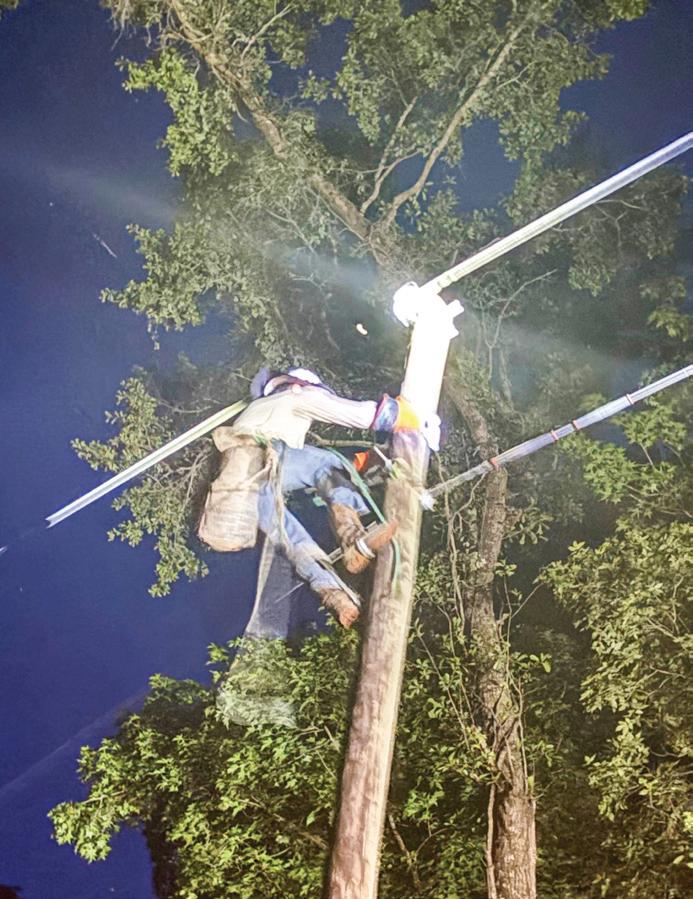
GCEC Employees Complete Basic First Aid and CPR Training
Gulf Coast Electric Cooperative is committed to the safety of its employees and members. At least once a month, GCEC conducts safety training for its employees.
Recently, all employees were recertified in basic first aid and
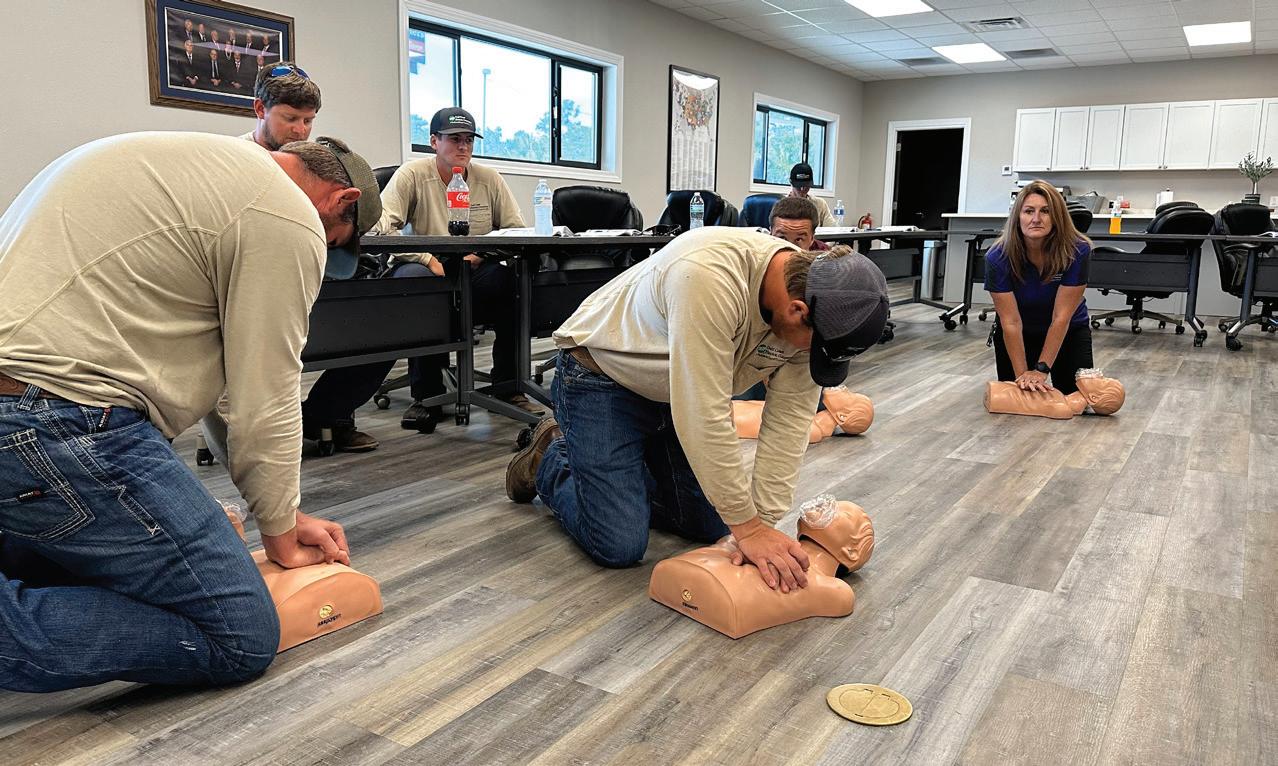
CPR. To renew their certifications, employees attend required annual training classes.
After viewing a presentation, employees demonstrated proper techniques by performing CPR on a manikin. n

Gulf Coast Electric Cooperative employees practice CPR techniques on a manikin during required annual training. The hands-on certification ensures staff are prepared to respond in emergencies.
During a nighttime outage, GCEC employees put their training into practice while working in the dark.















Introducing new Talent




GCEC adds three employees to staff










Jackson Randall and Connor Grath recently joined Gulf Coast Electric Cooperative’s boring crew at Tyndall Air Force Base east of Panama City. Chase Tucker is GCEC’s new director of safety. Prior to coming on board at GCEC, Chase was safety director for Yampa Valley Electric Cooperative in Colorado.
Jackson Randall Connor Grath
Chase Tucker
Generational Wealth A future for generations to come

















































































The Cowboy Way




Pastor uses horses to express relationship with God
By Melanie Jones
Don’t expect to see a hymnal or hear a longwinded sermon at Cowboy Up Church in Plant City. The only sign you’re in a church is a cross next to the riding pen. And while it may not feel like church, the congregation hears good horse training tips and about 15 minutes of preaching on how training a horse relates to building a relationship with God.
Cowboy churches are for people who normally wouldn’t attend a worship service. Cowboy Up takes it further.
“From the few cowboy churches that I’ve been to or watched on TV or Facebook,

the only thing different is they wear their cowboy hats and boots,” preacher Skipper Calder says. “It’s still church just like it always was—they sing some songs, they do a sermon and they take up an offering.”
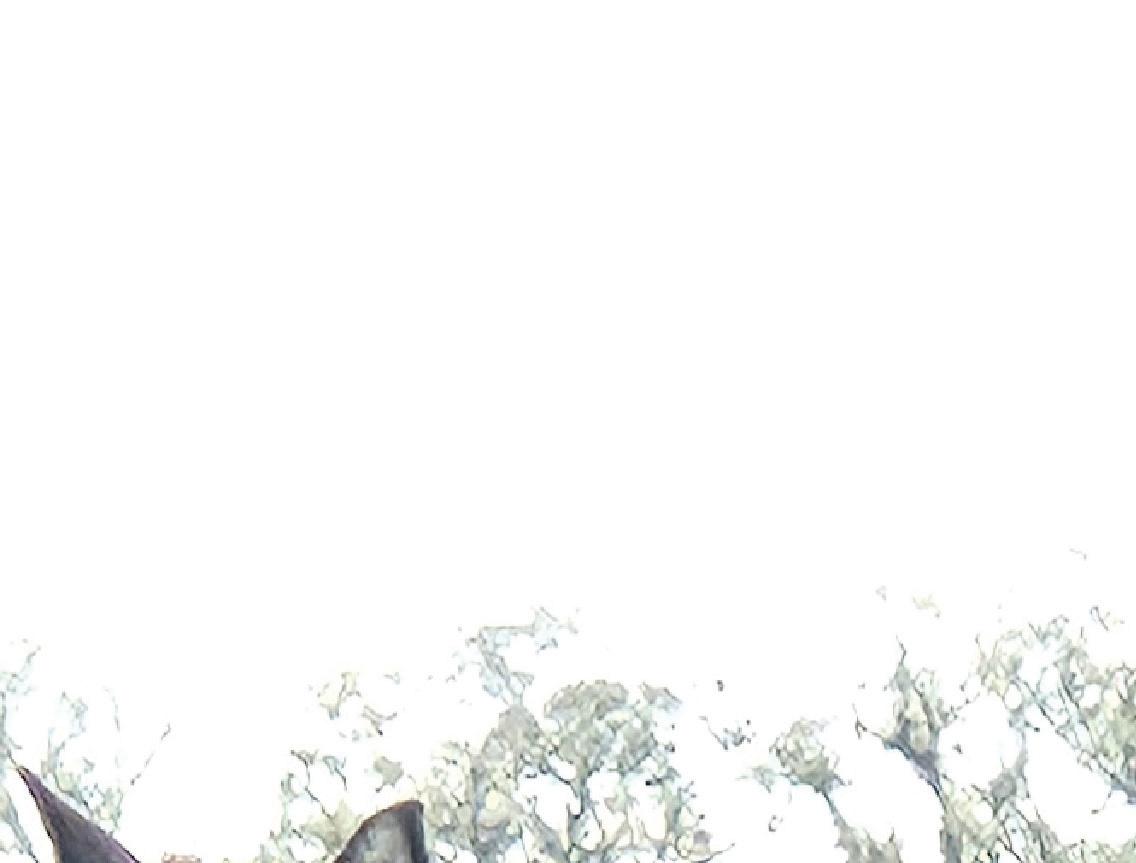
Training With a Message
Cowboy Up has no singing or offering plates.
“We use a horse,” Skipper says. “We’re trying not to be too churchy. We don’t want it to look like a church because we’re trying to reach people who do not go to church. We call it horse training with a message.”
The services are held in a pole barn at a riding stable. At Cowboy Up, there are not a lot of rules and regulations, Skipper says. It’s a relationship.

“That’s what we teach with the horse,” he says. “The horse-human relationship is the closest relationship there is on Earth to man and God. Man and dog isn’t a good illustration. But a horse, if he doesn’t like you, he won’t be good to you. He won’t be kind. He won’t be obedient. You have to become his leader, where with a dog, they just love you anyhow.”
Before Sunday services at Cowboy Up,



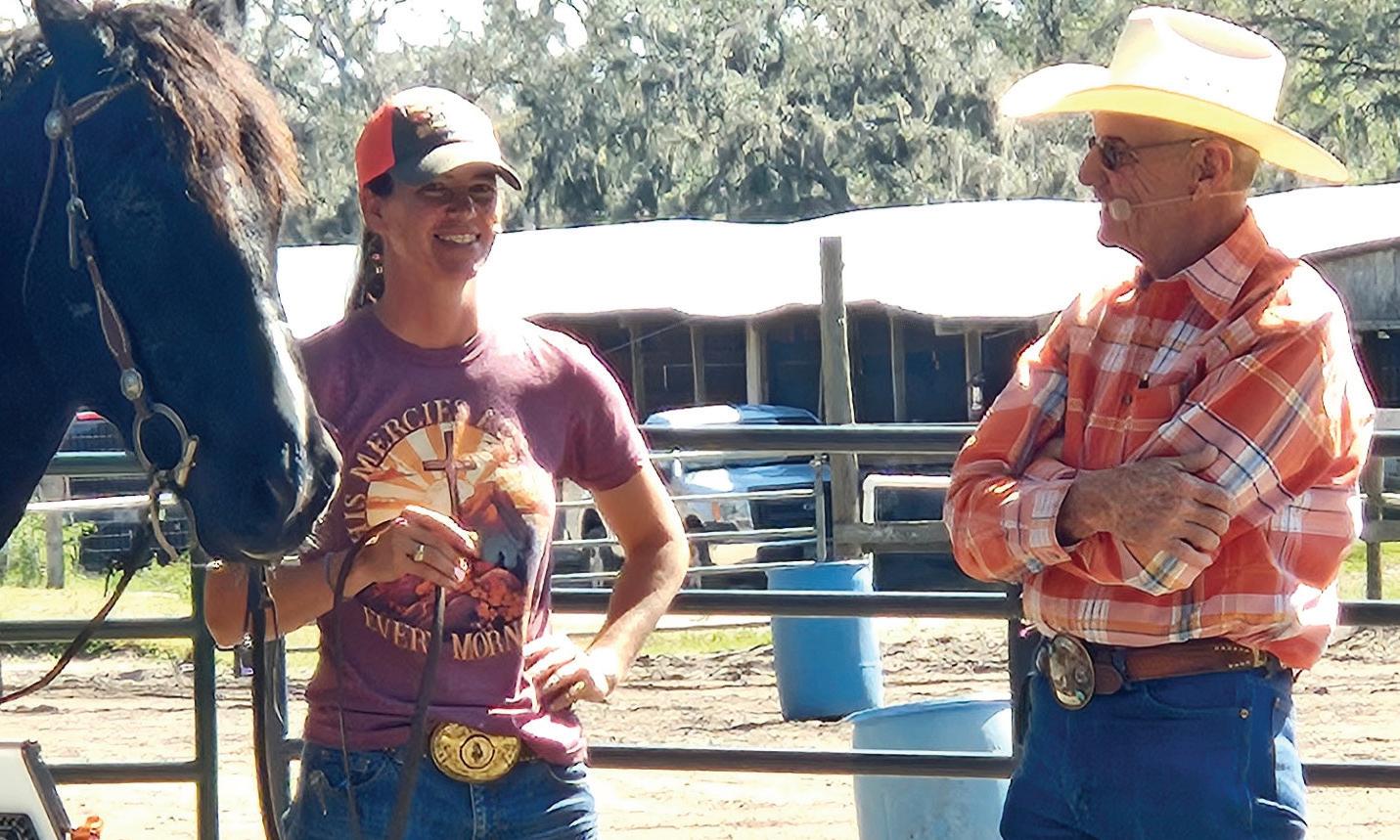










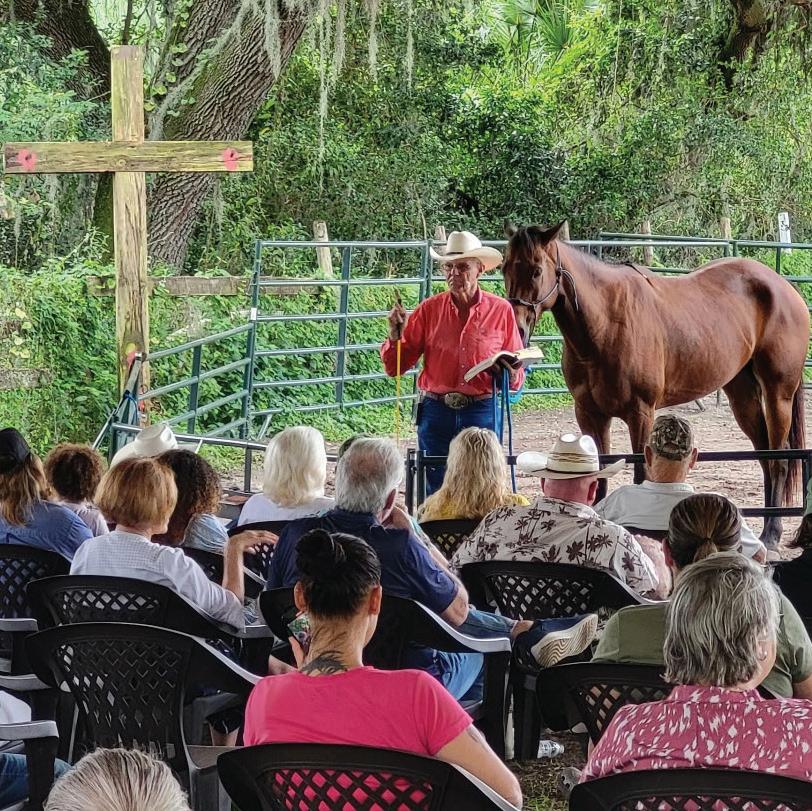

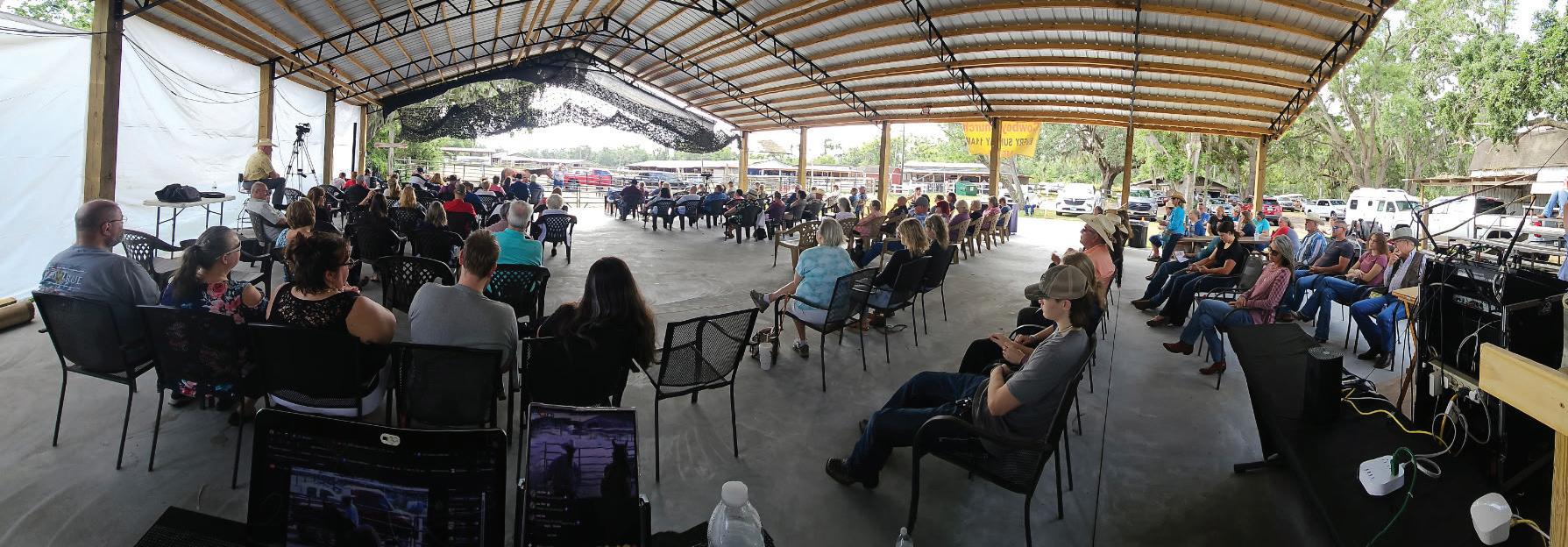
Skipper, his wife, Kathy, and other leaders show up 30 minutes early to pray in the riding pen and the pole barn for the message, the people who will attend and for church services everywhere.
Skipper has no trouble finding horses. People come to him to train their animals. He generally has a few to choose from each Sunday, and he doesn’t use the same horse twice. If a horse owner doesn’t show up with the animal scheduled for that Sunday, he can always find one at the riding stables where church services take place.

“Whatever the horse gives me, I have the gift of relating that to our relationship with God,” he says. “And while I’m working with a horse, I can make statements that will talk about, this looks like us and God sometimes. ‘Avoidance always comes before surrender’ is one of them.
“Focusing on the world instead of the trainer is huge. Many times, I get really
excited, nervous horses, and it’s because, in their mind, they are the leader. Jesus taught us to be a follower. As a trainer, I can get this horse to follow me pretty quick, and then he finds peace.
“That’s the essence of what we want to do is help people find peace through Jesus.”
Finding the Path
Skipper did not take the straight road into ministry, but the cowboy part came naturally.
“I grew up the cowboy way,” he says. “I am a cowboy. I love the cowboy way, riding different horses, training horses.”
Before establishing the church, Skipper rode in rodeos for five years. He won seven saddles, some buckles and endured his share of injuries along the way.

“I’ve had 44 broken bones and have three artificial joints,” he says. “It’s a rough life. Part of my broken bones is that every time a horse bucked me off, I broke ribs. A
lot of them were the same ribs. That’s how I accumulated so many.
“I love the life, but it’s a very hard life,” he adds. “I’m sure glad God changed my direction to where I can keep doing what I love—working with horses and talking about God.”
Skipper didn’t understand having a relationship with God, as he puts it, until tragedy struck.
He and his wife were friends with neighbors who were expecting a baby. The wife went into labor early, and the baby and the mother died. All the friends were heartbroken, but the woman’s father came around and spoke with each of them, telling them she was at peace in God’s arms.

“The belief that he had, the strength that he had, I wanted that,” Skipper says. “I wanted that peace.”
Cowboy Up Church meets at 11 a.m. Sundays at 5534 Turkey Creek Road in Plant City.
CLOCKWISE FROM RIGHT: Skipper addresses his congregation. Cowboy Up members circle the riding pen in prayer. Cowboy Church members listen to a sermon in the pole barn.
OPPOSITE PAGE: Skipper speaks with a congregation member during a service.
PHOTOS COURTESY OF SKIPPER CALDER
Thriving Create a
Gardeners’ choices affect Florida’s ecosystem


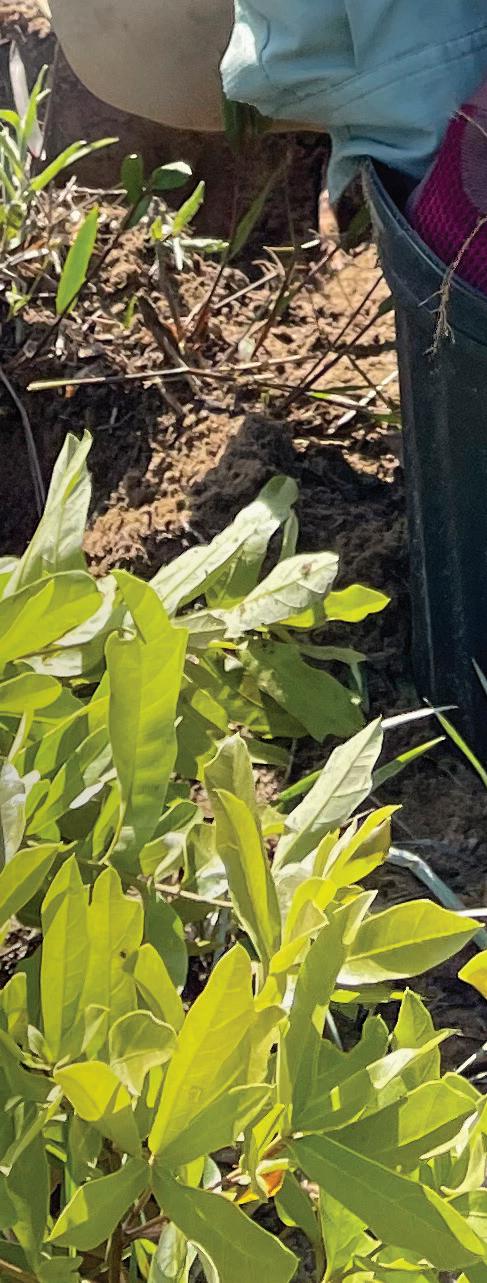
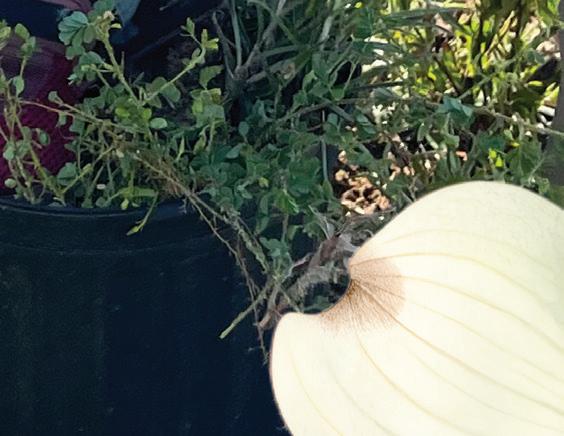
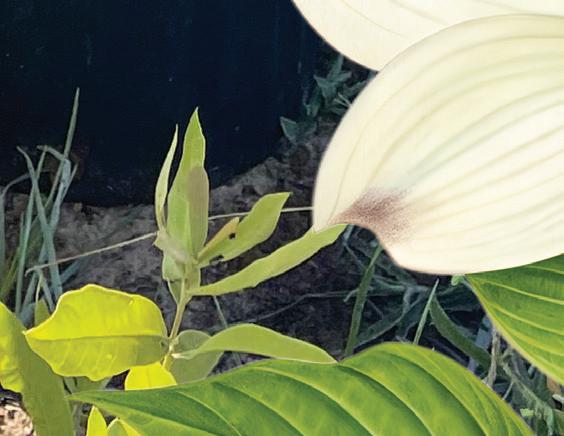



















Lilly AndersonMessec is director of North Florida Programs for the Florida Native Plant Society.
Landscape Native Plants With
By Pamela A. Keene
If you have ligustrum, Bradford pear trees, heavenly bamboo or English ivy in your yard, you’re growing a potentially invasive species that can change the balance of nature.





“The definition of an invasive plant is threefold,” says Lilly Anderson-Messec, director of North Florida Programs for the Florida Native Plant Society. “One, it has its origin somewhere else. Two, it spreads rapidly. And three, it has negative economic and environmental effects.”
Some nonnative plants are introduced when landscapers or residents buy an


attractive plant to fill a particular need. They are also spread by birds eating the seeds and dropping them elsewhere.
“I’m always surprised at how many box retailers and nurseries continue to sell invasive plants,” Lilly says. “Becoming educated about the benefits of native plants can go a long way toward protecting the environment.”
Native Alternatives
Lilly cites some of the most invasive plants in Florida landscapes and offers native options.
Chinese privet and ligustrum, for example, are often used as privacy screens.










“For a long time, these were popular basic landscaping materials, but they proved to easily multiply through their seeds or berries, spread by the birds that feed on them,” she says.
She suggests native alternatives, such as wax myrtle, Ocala anise or cherry laurel.
“Any of these have dense growth habits, are evergreen and can be pruned into hedges,” she says. “Natives like Simpson’s stopper, Walter’s viburnum and Yaupon holly can also provide privacy. They are better left to their own growth habit rather than pruning them.”
For South Florida, the Florida Native Plant Society recommends native sea









ADOBE STOCK PHOTO BY MR RAHMAN
Lilly says it’s vital that residents are aware of the implications of planting invasive species. PHOTOS COURTESY OF LILLY ANDERSONMESSEC
grapes and cocoplums. Both are used for coastal dune erosion control but also make effective privacy screens.
Flowering trees are very popular in home landscapes. In the mid-1960s, Bradford pears, with their clouds of white spring blossoms, became a favorite— particularly in North Florida.
“When they were introduced, developers claimed these trees would be unable to reproduce from seed, but after about 40 years, this proved untrue,” Lilly says. “Fast forward to today, and states like South Carolina, Pennsylvania and Ohio have banned them from being sold.
“Other states have classified them as invasive. The branches break easily, and they can become eyesores, but even more importantly, they are aggressively competing with native plants to the detriment of wildlife and the ecosystems we depend on.”
Another type of flowering tree once popular for home landscapes, the powder-puff tree—also called mimosa—is categorized as invasive by the University of Florida Institute of Food and Agricultural Sciences. Its softpink blooms are easily pollinated, leaving behind seed pods that feed birds.
The Florida mimosa is native, but its rapid spread displaces other natural vegetation, landing it on the prohibited lists of some Florida counties.
Instead, Lilly says many native plum trees are excellent choices, as are






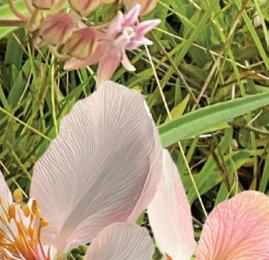






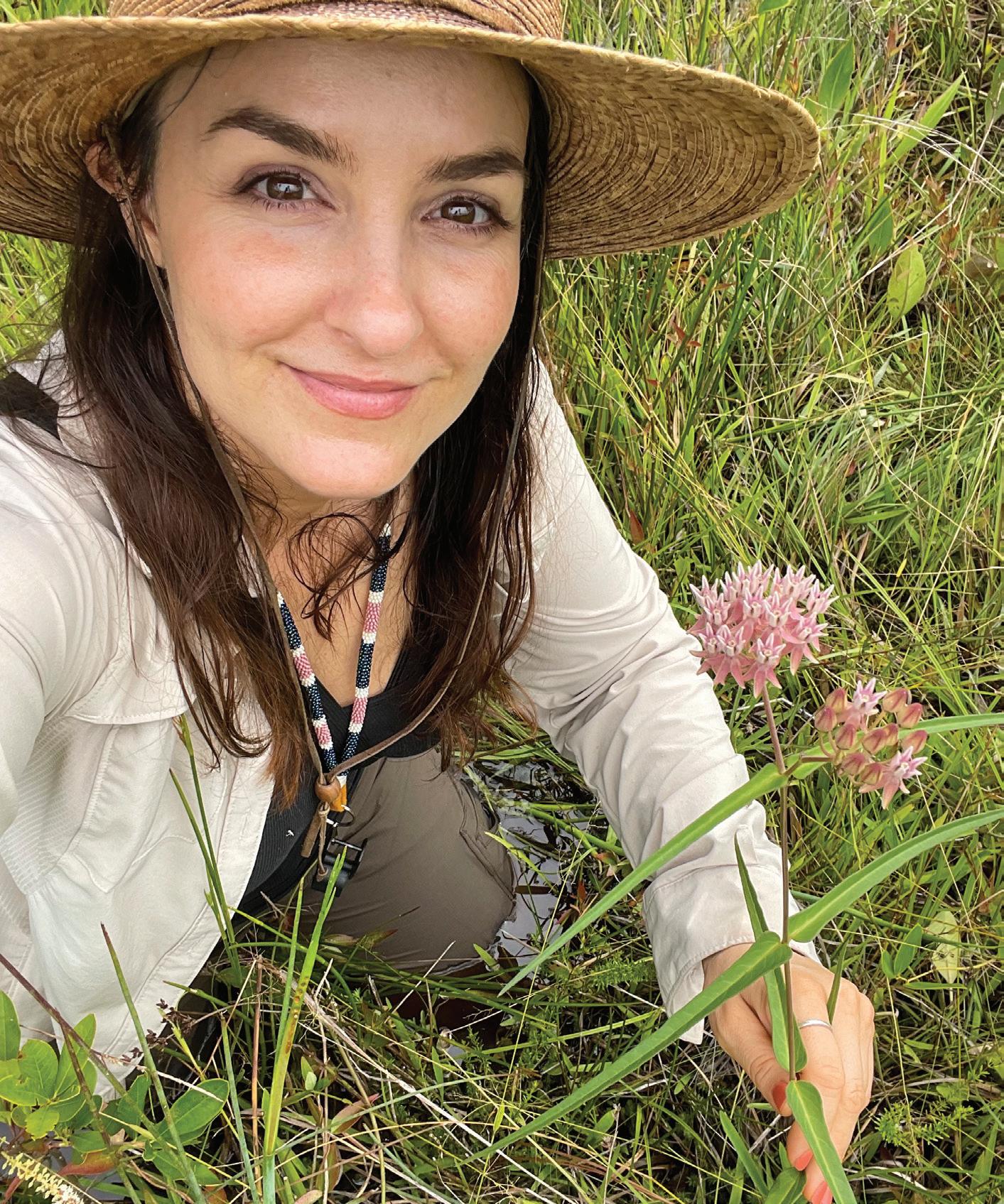




dogwood, crabapple and redbud.


“These are all small native trees with lovely umbrella-type forms that also bloom prolifically in spring,” she says.


A Delicate Ecosystem
Blooming trees and shrubs are pretty, but, more importantly, they provide food for pollinators and other wildlife—such as bees, insects and birds. They are also important larval hosts for butterfly and moth caterpillars that depend on the specific leaf chemistry of native plants
As the director of North Florida Programs, Lilly knows the best native plants for Florida.
they evolved with. The trees adapted to host caterpillars eating their leaves without incurring harm.
“We want to see holes in the leaves of our native plants because that means they are a functioning part of the food chain,” Lilly says. “Caterpillars are critical sources of protein and nutrients for all wildlife, but especially baby birds.”
Songbird chicks can only eat insects. Without native trees that host caterpillars and other insects, songbird parents don’t have access to the critical food source.







“Songbird populations are crashing, largely due to the loss of habitat that provides them food,” she says. “Ecosystems are delicately balanced machines that provide many services we depend on for our health and happiness, like clean air, clean water, pollination of food crops and extreme weather buffers. “The choices we make in our yards have reverberating consequences on the health of our wildlife and ourselves.”

shades out native trees and plants on the forest floor,” she says. “Its roots prying into the bark can hold moisture and cause splitting or rotting, eventually killing the tree.”
Eliminating English ivy is challenging and can be a multiyear project. The root system must be removed which often requires using a sod cutter. Vines growing vertically up tree trunks must be cut and carefully pulled down once dead to avoid damaging the tree.
owner. Let them know you’re interested in converting your landscape to include native plants. Area horticultural organizations often hold native plant sales, including your local chapter of the Florida Native Plant Society or area Master Gardener groups.”
Floridians can help protect the state’s unique environment by learning about native plants.
“If you have English ivy adjacent to your property but it hasn’t spread there yet, keep a regular eye on it,” Lilly says. “Stopping the spread is much easier than trying to remove large areas.”


“It’s so important that residents are conscious of the implications of invasive species,” Lilly says. “Becoming educated about the benefits of native plants in your landscape can be an excellent first step in helping protect wildlife and the ecosystems that we as humans depend upon.”





Several vining plants are good replacements for English ivy, including Virginia creeper, crossvine, yellow jessamine and native coral honeysuckle.






“Finding good native options for landscaping can be challenging,” she says. “Get to know your local nursery
For more information about native plants and invasive species, how to manage them and where to find native plants, check out the Florida Native Plant Society at fnps.org and the University of Florida Institute of Food and Agricultural Sciences Extension, edis.ifas.ufl.edu.






















Nandina or heavenly bamboo, introduced from Asia as an ornamental shrub, spreads prolifically through its bright-red berries and is now on invasive plant lists.


“It can quickly crowd out native plants,” Lilly says. “The pretty red berries contain natural cyanide, making them toxic to birds, especially cedar waxwing and mockingbirds.”
English ivy, most common in North Florida and the Panhandle, can cause serious ecological and environmental issues. Deemed invasive in many states, it can quickly grow up tree trunks and spread to limbs and nearby trees.
“Like many invasive vines, the sheer weight of English ivy can do severe damage to the trees it covers, plus it
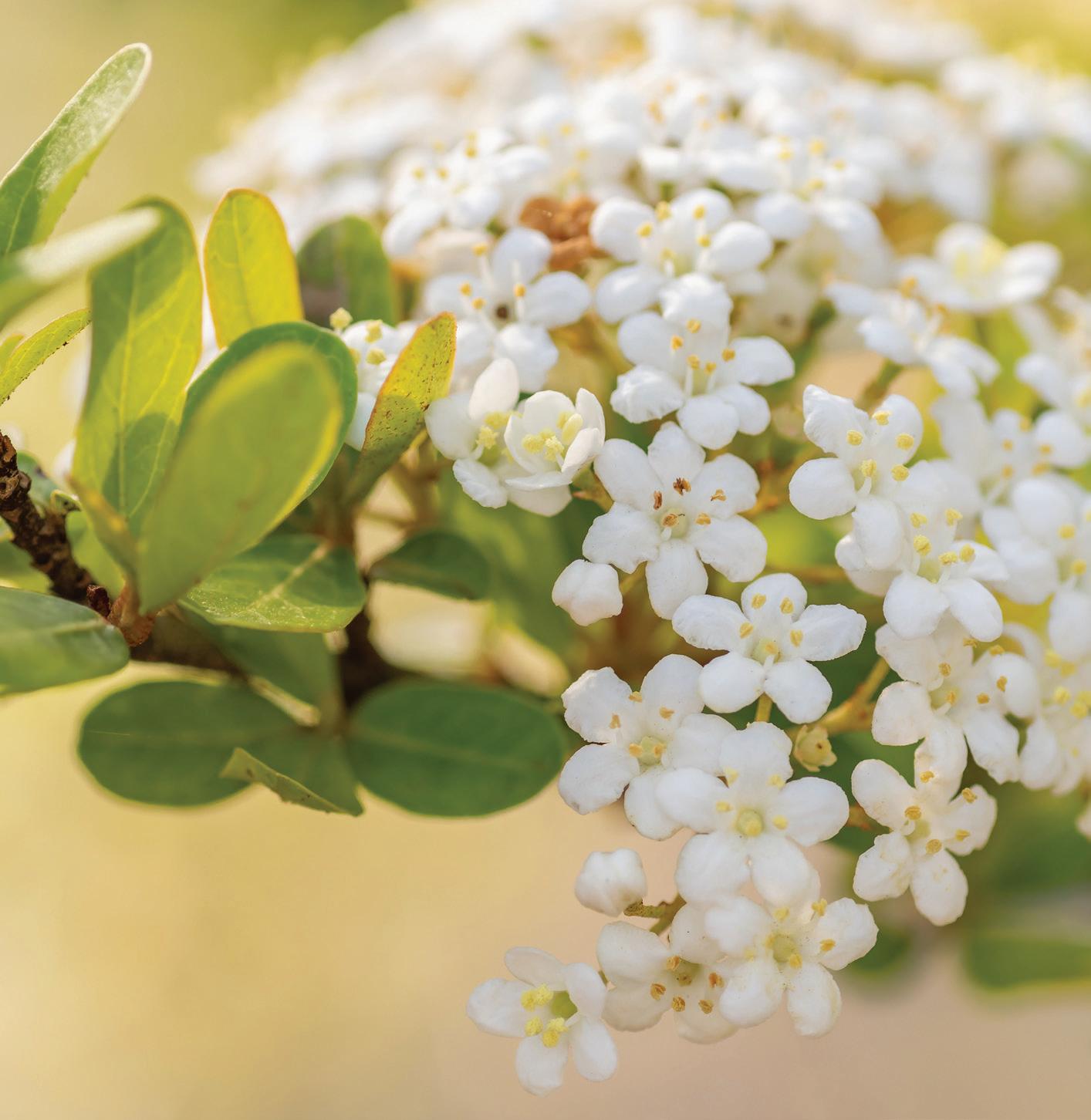


A BOUNTY OF BASIL From Garden to Table:


Classic Caprese Pasta Salad
Pasta salad
1 pound of your favorite shaped pasta, cooked and cooled
3 cups grape tomatoes, halved
12 ounces fresh mozzarella cheese balls, plain or marinated, halved
Dressing



½ cup extra-virgin olive oil
4 tablespoons red wine vinegar
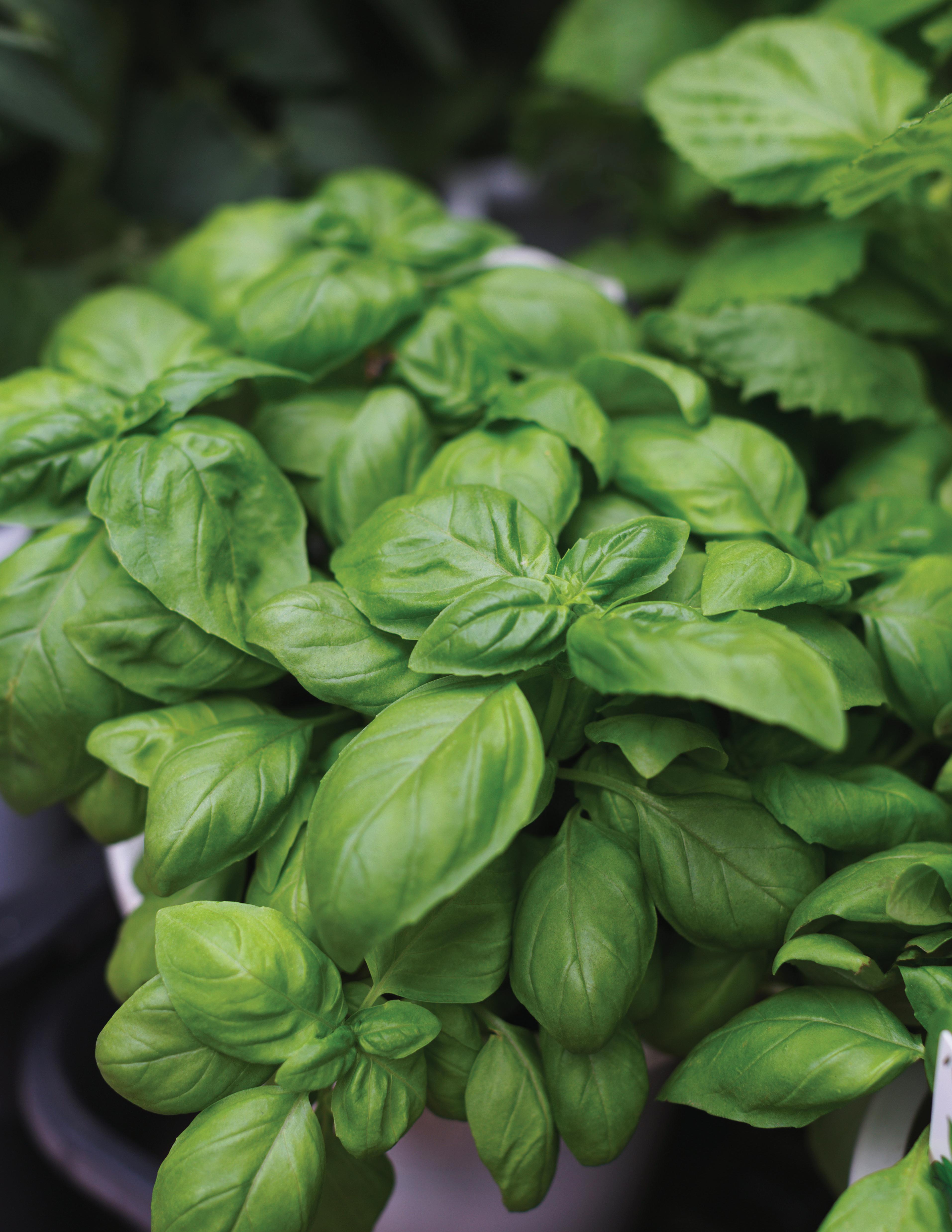
1⁄3 cup basil, chiffonade
¼ cup parsley, chopped
1⁄8 cup freshly grated ParmigianoReggiano cheese
Balsamic glaze, for drizzling
1 garlic clove, minced Salt Pepper

In a bowl, combine pasta, tomatoes, cheeses and herbs. In a glass measuring cup, whisk dressing ingredients. Season to taste. Pour dressing over pasta salad, and toss to combine. It’s best if it’s chilled for an hour. Garnish with more basil. Drizzle with balsamic glaze just before serving.


Recipes by Gertrude Treadaway
ADOBE STOCK PHOTO BY YULIA LISITSA
Green Goddess Salad Dressing
½ cup mayonnaise
½ cup scallions, chopped
½ cup chopped fresh basil, packed
1⁄8 cup freshly squeezed lemon juice
1 clove garlic, chopped
1 teaspoon kosher salt
½ teaspoon freshly ground black pepper
1 teaspoon anchovy paste
½ cup sour cream
Place all ingredients except for sour cream in a blender or food processor. Blend until smooth. Add sour cream and process until blended.
Keep refrigerated until serving on your favorite salad.
Basic Basil Pesto
½ cup toasted pine nuts
2 tablespoons fresh lemon juice
1 garlic clove
¼ teaspoon sea salt
Freshly ground black pepper
2 cups basil, leaves only
¼ cup extra-virgin olive oil, plus more for a smoother pesto
¼ cup freshly grated Parmesan cheese
In a food processor, combine the pine nuts, lemon juice, garlic, salt and pepper. Pulse until well chopped. Add the basil. Pulse until combined.
With the food processor running, drizzle in the olive oil. Pulse until combined. Add the Parmesan cheese, and pulse to briefly combine. Add more olive oil if desired.
Basil Vinaigrette Pasta
Vinaigrette
1 shallot, roughly chopped
2 cups tightly packed fresh basil leaves, stems removed (about 4 ounces)
1 clove garlic
Pasta
1 pound pasta
2 tablespoons olive oil
2 cloves garlic
2 shallots, thinly sliced
½ teaspoon red pepper flakes
½ teaspoons red pepper flakes
½ cup olive oil
2 tablespoons red wine vinegar
1 teaspoon salt
1 zucchini, cut into coins
Kosher salt
Freshly cracked black pepper
1 lemon, juiced
Fresh basil
Parmesan cheese
To make the vinaigrette, combine all ingredients in a highpowered blender. Blend for 60 seconds until smooth. Taste and adjust salt and pepper as needed.
Cook the pasta according to the package directions until al dente. Drain and set aside.
In a large skillet, heat the olive oil over medium heat. Add the garlic, shallot and red pepper flakes. Saute until fragrant. Add the zucchini, and saute until just soft. Add the pasta and ½ cup of basil vinaigrette. Toss to combine. Add more basil vinaigrette as needed. Season with salt, pepper and lemon juice before serving.
Basil Mayonnaise
2 extra-large egg yolks, at room temperature
3 tablespoons freshly squeezed lemon juice
½ cup freshly grated Parmesan cheese
1 tablespoon Dijon mustard
½ cup chopped fresh basil leaves, lightly packed
1 teaspoon minced garlic
1 tablespoon kosher salt
1 teaspoon freshly ground black pepper
1 cup vegetable oil, at room temperature
½ cup quality olive oil, at room temperature
Place the egg yolks, lemon juice, Parmesan, mustard, basil, garlic, salt and pepper in a food processor fitted with the steel blade. Process for 30 seconds until smooth.
Combine the vegetable oil and olive oil in a liquid measuring cup. With the processor running, slowly pour the oil mixture through the feed tube to make a thick emulsion.
Store in the refrigerator until ready to use; it will keep for up to a week. Serve with beef tenderloin or steak.
Panzanella
Baguette bread, preferably stale, cut into 1-inch cubes (about 3 cups)
6 tablespoons extra-virgin olive oil, divided
1 teaspoon kosher sea salt, divided
2 pounds ripe tomatoes, any variety or color
8 ounces fresh mozzarella, torn into bite-size pieces
½ cup thinly sliced red onion
2 garlic cloves, grated to a paste
2 tablespoons red wine vinegar, divided
1 teaspoon dried oregano
Large pinch red pepper flakes
½ teaspoon Dijon mustard
Black pepper
1 cup sliced English cucumber
½ cup torn basil leaves
¼ cup flat-leaf parsley leaves, roughly chopped
Heat oven to 425 F. Spread the bread cubes on a baking sheet, and toss with 2 tablespoons oil and a pinch of salt. Bake until dried out and golden brown at the edges, about 10 minutes. Let cool.
Cut tomatoes into bite-size pieces, and transfer to a large bowl. Add mozzarella, onions, garlic paste, 1 tablespoon vinegar, oregano, ¼ teaspoon salt and red pepper flakes. Toss to coat, then set aside.
In a medium bowl, combine remaining 1 tablespoon vinegar, mustard, ¼ teaspoon salt and black pepper to taste. While whisking constantly, slowly drizzle in the remaining 4 tablespoons of olive oil until the mixture is thickened. Stir in cucumbers, basil and parsley.
Add bread cubes and cucumbers to the tomatoes. Toss well. Let sit for at least 30 minutes and up to 4 hours before serving. Toss with a little more olive oil, vinegar and salt if needed just before serving.
Speaking Without Words
By Dave LaBelle
I have written in past years about the merits of photographing people from the back, but the concept is worth repeating.
Body language—or gesture, as it is often called—can convey much in a still photograph. We can often tell a lot about a person’s disposition just by the way they carry themselves.
Whether overt gestures such as raising a fist in protest or outstretched hands imploring agreement speak loudly, the quieter, subtle gestures—such as the way one walks, or tilts their head when speaking or listening—can also communicate a lot when our eyes pay attention.
If you have never closely studied Rembrandt’s “The Return of the Prodigal Son,” I suggest you give this masterpiece a serious look. Beyond the mood-setting color, the postures of the son, father and brother—especially the positions of the hands—are powerful details employed to tell this compassionate story in one of the artist’s greatest works.
A few years ago, I was walking in the hills with a dear friend, Mark, after he had lost his oldest son. He often took long hikes alone to pray. He asked one day if I would walk with him. I did not carry a camera on this day, but I did have my cellphone.
Following behind on the narrow path,
Reader Challenge
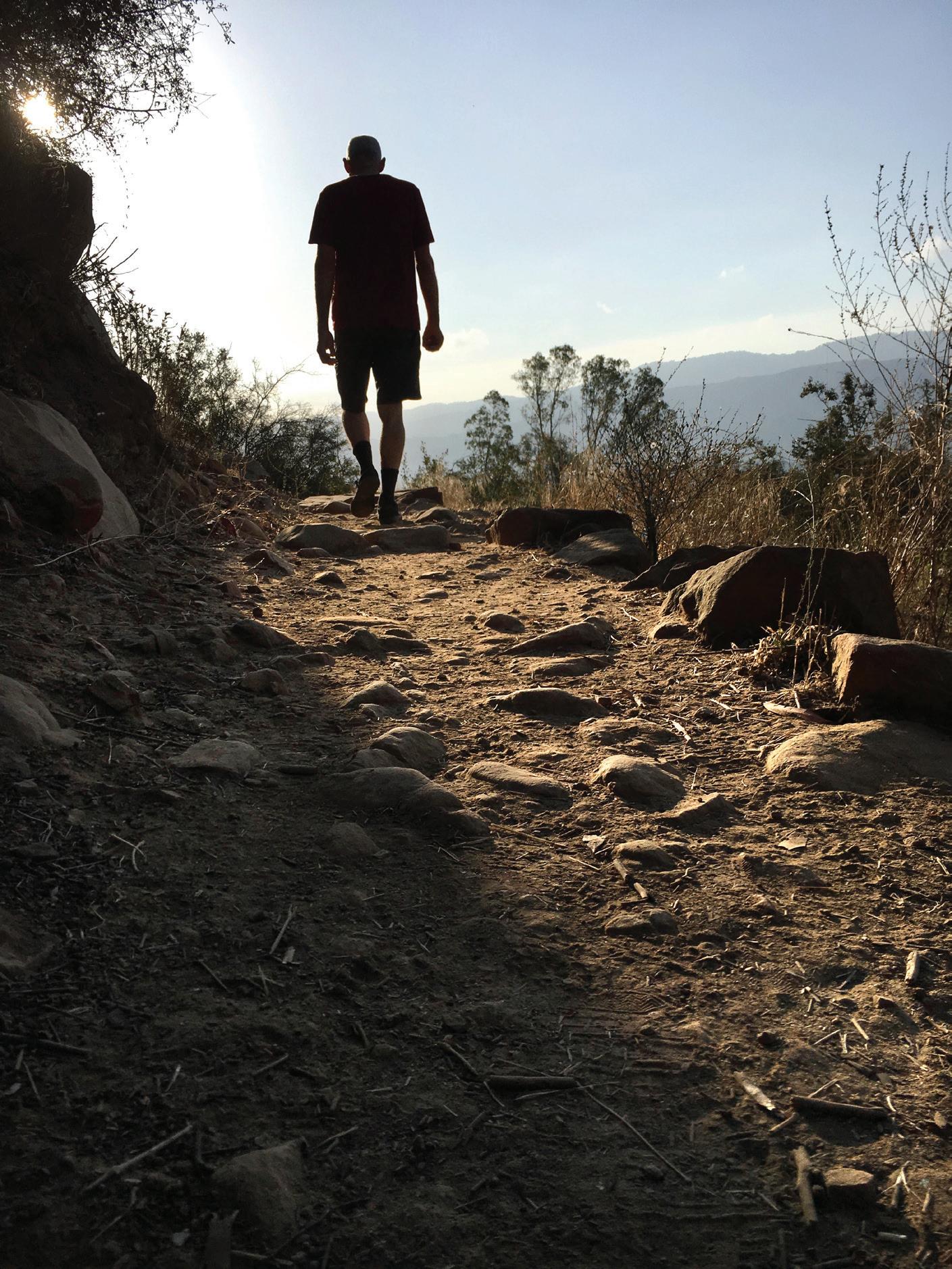
the movements of his body—sometimes unsteady on the stony path—felt like a metaphor for his life then.
I know you are struggling day by day, I observed.
He softly answered, “It is more like hour to hour.” n
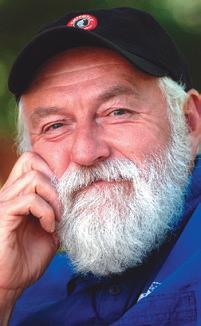
Capture a storytelling photograph without showing a person’s face. Pay attention to body language. Watch how one sits or walks and where they do so. It’s not uncommon to see older men ambling alone with their hands folded behind them.
Email your best image—just one—with caption information, including an explanation of how it affects you, to gph@pioneer.coop. We may share submissions on our website and social media channels.
special moments for more than half a century, sharing photo tips and life perspectives with readers. For more of his writings, visit davidlabelle.com and his blog at bridgesandangels. wordpress.com. iPhone 6s, 4.2mm lens ISO 25, f/2.2 at 1/2959
Photographer, author and lecturer Dave LaBelle has captured

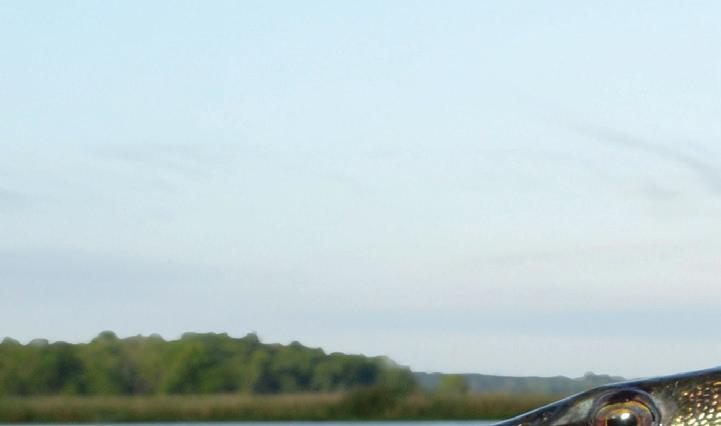


TOOTHY

TERRORS









Vicious, overlooked predator offers great sport
A toothy Florida native offers outstanding sport all over the Sunshine State, yet few people fish for it.
“Chain pickerel are found in most waters throughout Florida,” says John Cimbaro, a Florida Fish and Wildlife Conservation Commission biologist. “Not very many people target pickerel in Florida. Most people catch them incidentally while fishing for other species, like bass. Anyone who hooks into a pickerel can expect some exciting runs and jumps.”
Closely related to northern pike and muskellunge, chain pickerel resemble green torpedoes. Built for speed, this fish can exceed 30 inches and weigh more than 9 pounds. A fish caught in Lake Talquin holds the Florida state record at 6.96 pounds.
Frequently called jackfish, duckbill or snakefish, pickerel hit extremely hard, fighting with speed and tenacity. They thrive in weedy waters, where their splendid splotchy green camouflage hides them. When an enticing morsel passes close, these toothy terrors launch from their lairs, seizing prey with razor-sharp teeth.
“Chain pickerel are almost always found near vegetation,” John says. “In streams
or rivers, they like quieter pools. Like a barracuda, their streamlined bodies are designed for the same kind of high-speed ambushes and chases. They are big fish eaters, but they eat a varied diet to include frogs, crawfish, snakes and even small mammals, like mice.”
Pickerel commonly attack lures meant for largemouth bass, particularly anything that mimics shad, bream or shiner. Such “fishy” lures often provoke brutal strikes from terrifying predators. Some better lures include spinnerbaits, jerkbaits, weedless spoons and crankbaits.
Pickerel occasionally hit topwater baits. They especially like frogs buzzed across matted grass. Live shad, wild river shiners and other fish make great natural baits.
“Chain pickerel are very fun to catch and will hit almost anything that a largemouth bass will hit, but they like flashy lures more than soft plastics,” says Mark Shepard, a bass guide. “Lake Okeechobee has quite a few chain pickerel. We catch them with rattling baits, crankbaits and spinnerbaits. We also catch pickerel on weedless spoons worked over matted grass tops.”
Chain pickerel range throughout
Florida. Anglers might catch a pickerel on any cast in any weedy freshwater system. Some better waters include lakes such as Seminole, Talquin, Jackson, Panasoffkee, the Kissimmee and Harris chains, and the St. Johns River system.
“Anglers might catch pickerel almost anywhere in the state,” John says. “(Those) wanting to target chain pickerel should concentrate on lakes and rivers in northcentral or northwest Florida. In southeast Florida, the Everglades Water Conservation Area canals hold pickerel. Fly anglers should throw quickly retrieved, bright or flashy streamers.”
Although bony, big pickerel are excellent for eating. However, anglers should handle pickerel with care. When grabbed, the incredibly agile fish can easily bend their bodies and sink their teeth into flesh or drive a hook into a finger. Sharp gill plates can slice flesh. Use pliers to unhook them.
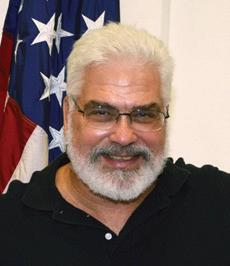
John N. Felsher is a freelance writer, broadcaster, photographer and editor. He’s written more than 3,500 articles on a wide variety of outdoor topics. Contact him at j.felsher@hotmail.com or through Facebook.
Bass pro Trent Hill shows a chain pickerel he caught on a spinnerbait at Lake Seminole. PHOTO COURTESY OF JOHN N. FILSHER

Unplug and Play








Use family fun to teach kids the power of energy conservation
By Drew Woolley









ages, cooperatives have learned a few helpful tricks to resonate with younger audiences. Hands-on activities, such as asking kids to look through their backpacks for electronic devices and calculating how much energy they use, can drive home just how much electricity they use in their daily lives. Meanwhile, avoiding technical terms like “energy efficiency” can help saving energy feel less daunting and more fun.

Everyone likes finding ways to save on their energy bill. But watching the thermostat like a hawk, turning off lights behind everyone in the house and sweating an investment in energy-efficient appliances isn’t much fun, especially when you’re trying to get the kids to play along. Fortunately, electric cooperatives have been working to make energy savings more approachable for many years.





AIGENERATED ILLUSTRATION
BY FREEPIK/BRANDON POMRENKE


Even so, some of the most effective ways to drive home the importance of energy conservation are the routine reminders members may have heard from their parents growing up. Luckily, there are still plenty of ways to teach your kids the importance of energy conservation while having fun as a family.


After decades of educating kids of all






Here are some fun ways to encourage energy efficiency and conservation at home: Cook a family-powered dinner. Have the whole family help cook dinner with one rule: No electricity is allowed. Avoid using major kitchen appliances like electric ovens, blenders, mixers or
microwaves to teach kids about common ways your family uses electricity during peak demand times. Top it all off with some no-bake treats.




Take turns on power patrol. Every child enjoys being in charge from time to time. Take turns letting everyone in your family be responsible for enforcing good energy habits around the house for a week. You can even set up a point system for every time they notice a light left on in an empty room, unplug unused electronics chargers or adjust the thermostat to a more efficient setting. Offer prizes and rewards to encourage them to be mindful of energy use every day.








Build an energy-efficient dream home. Encourage everyone to design their dream home with energy-saving features in mind. This is a great way to introduce ideas like solar panels, efficient appliances and sustainable building materials. Break out the crayons and art supplies to bring their homes to life, or use household crafts to build models.











Play energy-saving bingo. Make bingo cards with squares for energysaving actions like using natural light instead of lamps or ceiling lights, unplugging devices, turning off lights and cooling off the temperature by opening a window. Kids can cross out each square as they complete each task, and the first one to bingo gets a prize.








Have power-free fun. Designate one night a week as power-free time when everyone in the family turns off phones, computers and TVs together. Play a board game, spend time reading your favorite books or enjoy some outdoor activities technology-free. Save on your electric bill, teach the importance of reducing energy use during peak periods and get some valuable family time all at once.




Make an energy-saving scavenger hunt. Make up a list of energy-saving practices, such as updating light fixtures with LED bulbs, turning off lights in empty rooms and unplugging










unused devices. Challenge your kids to search the house and check off an example of each scavenger hunt item. You can celebrate with small prizes or treats for each energy-efficient discovery they make along the way.




Create energy-efficient art. Kids enjoy seeing their artwork displayed, so put those creative skills to work on energy-efficient reminders around the house. Spend arts and crafts time teaching your kids about some of the steps they can take to save energy around the house. Make fun signs to serve as daily reminders to close the fridge quickly, turn off lights and only change the thermostat as a last resort.






every time someone spots an unused device still plugged in. Set a goal and reward yourselves when everyone keeps phantom energy use down. No matter what you do to keep energy savings fun around the house, the most important part of instilling good habits is reliably reminding your family of the little steps they can take to be more efficient. Consistency is key.


Keep “phantom power” waste bottled up. Phantom energy—the electricity devices use even when they are turned off— can be a tricky concept for kids to understand. Illustrate it in a fun way by adding marbles to a glass bottle or jar


















FLORIDA CURRENTS

PLANNER


All ages can find something new and exciting around every corner of the state. Filled with rich history, abundant natural beauty and diverse events all year, Florida has something fun for everyone.
PENSACOLA
Aug. 2
William Shatner Live On Stage with ‘Star Trek II: The Wrath of Khan’
Set your phasers to stun! Prepare to be beamed up for an unforgettable night with the original Capt. James T. Kirk, award-winning actor William Shatner. Following a screening of the classic film “Star Trek II: The Wrath of Khan,” Shatner takes to the stage to share fascinating and humorous behind-the-scenes stories from his career and answers audience questions. VIP tickets include a postshow photo op with Shatner. You don’t want to miss this warp-speed, once-in-a-lifetime adventure. bit.ly/4nqEV0x; 850-595-3880
PANAMA CITY
Aug. 2
History Tour of Camp Helen State Park

Join a park ranger from 10-11 a.m. CST for a guided tour of the grounds. Follow along as staff share park history from the Hicks family building the historic structures that still stand on the grounds, all the way through the colorful history of Avondale Mill using the property as its employee vacation retreat. Dress appropriately for the weather. Park entry fee is $4 per vehicle or $2 per pedestrian or bicycle in the honor box at the entrance or via the QR code on the entry sign.
floridastateparks.org/events/history-tour-36; 850-245-2157
ST. AUGUSTINE
Aug. 3
Guided Bird Walk
Come meet the birds at Anastasia State Park and join a knowledgeable park volunteer for an informative walk on the beach, boardwalks, trails and other areas. Participants of all birding levels may observe a diverse variety of seabirds, shorebirds and wading birds. Dress for the weather and bring binoculars, comfortable walking shoes and a field guide if you have one. Meet at the Island Beach Shop & Grill at the end of the main park drive. This walk is free with regular park admission fee: $8 per vehicle with two to eight people; $4 per single-occupant vehicle; and $2 per pedestrian, bicyclist, extra passenger and passenger in vehicle with holder of Annual Individual Entrance Pass.
floridastateparks.org/events/guidedbird-walk-119; 850-245-2157

PORT ST. JOE
Aug. 2 & 16
Salt Air Farmers Market
Join us from 9 a.m. to 1 p.m. on the first and third Saturdays in discovering fresh produce, handmade crafts, plants, and more from local farmers and artisans. This dog-friendly market offers a fun, family-friendly experience in a shaded downtown park at the corner of U.S. 71 and Reid Avenue.
saltairmarket.com; 850-373-7379
PENSACOLA
Aug. 6
Library Summer Reading Program: Reno’s Reptiles
Join us from 10:30-11:30 a.m. at Big Lagoon State Park for a reptile showand-tell as alligators, tortoises and other critters visit your local library. All ages are welcome. Visitors receive free entry to the park for this event with their library card. If visitors wish to remain in the park after the event, they should obtain a $6 day pass per vehicle.
floridastateparks.org/events/library-summer-reading-program-renos-reptiles.com; 850-245-2157

ADOBE STOCK IMAGE BY CHRISTINA SAYMANSKY

PENSACOLA BEACH
Aug. 8
Cinema in the Sand
Presented by the Santa Rosa Island Authority, this beloved tradition invites locals and visitors to gather under the stars, feel the sand between their toes and enjoy timeless movie classics against the breathtaking backdrop of the Gulf of Mexico. This month’s movie is “Shrek.” www.visitpensacolabeach.com; 850-530-3349
KEYSTONE HEIGHTS
Aug. 9
Smokey Bear’s Birthday Celebration
Come celebrate Smokey Bear’s 81st birthday from 9 a.m. to 1 p.m. at Mike Roess Gold Head Branch State Park. The party includes several activities to educate and promote prescribed fire, including a prescribed burn demonstration, touch-a-fire-truck, Smokey Bear storytime and a meet-andgreet. This event is free with park entry of $5 per vehicle. floridastateparks.org/events/smokey-bears-birthday-celebration-0; 850-245-2157

PENSACOLA
Aug. 15
Gallery Night: Retro Rides and Art Vibes ‘Car Show’
Presented by Publix, this event brings the streets of downtown Pensacola to life with more than 70 art vendors showcasing their work along Palafox Street. Stroll through a vibrant, open-air market filled with local artists, live performances and creative experiences, all celebrating Pensacola’s thriving arts scene. www.gallerynightpensacola.org
ISLAMORADA
Aug. 16
Bathysphere Anniversary Tours
Join the History of Diving Museum at 11 a.m. and 2 p.m. for special guided tours of the exhibits. The tour is included in the admission price. August’s tours coincide with the 91st anniversary of William Beebe and Otis Barton’s historic dive in the Bathysphere, which took the two men to 3,028 feet in 1934. These tours feature highlights of the Bathysphere and its incredible feats. divingmuseum.org; 305-664-9737
BUSHNELL
Aug. 23
Early American Pie-Making Class
Join expert volunteers and staff as they teach participants the historic art of early American pie-making with wild berries. Preregister at the number below. Participation cost is $10 per person in addition to $3 per vehicle or a Florida State Parks Annual Pass.
floridastateparks.org/events/early-american-pie-making-class; 352-793-4781



KEY WEST
Aug. 7
Truman Waterfront Farmers Market

Shop with a view from 2-7 p.m. on the harbor by the USCG Ingham Museum at the corner of Southard Street and Weech Way. Find great food options—including ready-to-eat items, fresh Florida produce and other grocery items—along with gifts, home decor and art. keysartisanmarket.com; 305-731-3385

WEWAHITCHKA
Aug. 30
Gulf County Labor Day Rodeo
Dust off your boots and get ready for a night of heart-pounding rodeo action, with gates opening at 5:30 p.m. and the rodeo starting at 7:30 p.m. at TL James Park. This family-friendly event promises a spectacular showcase of traditional rodeo events. The evening features crowd favorites such as bull riding, barrel racing and roping. Whether you’re a longtime rodeo fan or just looking for something exciting to do over Labor Day weekend, this event delivers big thrills and smalltown fun. Tickets are $20 for those 13 and older and $10 for 6- to 12-year-olds. Children 5 and younger enter for free.
bit.ly/44yNQo5; 850-229-7800
PORT ST. JOE
Aug. 30-31
Florida Scallop, Music and Arts Festival
Featuring the best arts and crafts vendors from the region and incredible food vendors, this annual event at George Core Park offers a full music lineup across both days. Tickets are sold at the gate as one- or two-day passes—$10 and $20, respectively. Children younger than 12 given free admission. Bring a lawn chair, but outside food and drinks are not allowed. www.gulfchamber.org/annual-monthly-events; 850-227-1223
HOW TO INCLUDE UPCOMING EVENTS
Want to share a family-friendly event with the readers of Florida Currents? Head online and enter the details at tinyurl.com/FloridaCurrents or use the QR code for easy access. Make sure to submit the item at least 60 days before the event (due to press deadline). If you own rights to a print-quality photo promoting your event, include it with photo credit information.










About Native Bees
y t Bu
Trundling along,
Dipped brow.
Weighty preponderance.
What contemplation droops the brow
Of one so bright?
Flirting with ephemerality,
A bouncing farewell.
Corolla left trembled
From the footsteps
Tickled surfaces.
The gift of pollen delivered.
— Alyssa Vinson
We follow the spiral of humming locomotion as a bee dips and trundles, sipping nectar and inadvertently ushering in the reproduction of flowers. Pockets overfull with golden pollen or dusted daftly across the fuzzy hairs of their abdomens— sometimes so rotund that flight seems impossibly comical.
Bees arrive in the periphery of our awareness, often only the focus when we fear the sting. These harbingers of pollination and many other beneficial services are often overlooked when conversations emerge around the topic of saving pollinators. Butterflies are so much more gregarious and therefore receive an outsized portion of our gardening attention. Bees of all sorts, and particularly native bees, are essential components of a vibrant and healthy local environment.
The common honeybee (Apis mellifera) is not native to North America. Originating in areas of Africa, this bee traversed the globe with human settlement. Used for centuries by humans for their honey, comb, wax and pollination services, honeybees are iconic and familiar. Less well known are the hundreds of species of native bees that evolved in our specific ecosystems.
The broad diversity of native bees includes bees of vibrant and gleaming green or blue, fuzzy bumblebees fatter than your thumb, and bees so small they might be mistaken for flies.
In Southwest Florida you may come across bright green sweat bees, metallic dark blue mason bees or the fuzzy large bumblebee.
While honeybees have the advantage of commercialization and industry to support their continued health and growth, native bees rely on the abundance and diversity of plant species in our landscapes and natural areas for their survival. Significant declines in insect populations and diversity are documented across the globe. Bees native to Florida developed

specific relationships with native plants over the course of their evolution. They provide significant ecosystem services in terms of pollination and act as key components of many food webs.
To encourage native bees in your landscape, plant a diversity of flowering plants, including different colors, shapes, sizes, forms and structures. Bees love plants with short- or mediumlength flower tubes to easily access the pollen and nectar, and they tend to prefer flowers that are white, yellow, blue or purple.
Remember to provide bees with plants that have not been treated with systemic insecticides, and limit the use of pesticides in your landscape.
For more information on how to encourage native bees to visit your landscape, visit edis.ifas.ufl.edu/publication/IN1255.
To understand the types of bees in Florida, read this guide from UF/IFAS: edis.ifas.ufl.edu/publication/IN1285.

Alyssa Vinson is the Urban Forestry Extension agent in Hillsborough County. Alyssa has lived in and explored Florida for almost 20 years. She serves residents and professionals of southwest Florida with programs on all things “tree.”
A bumblebee gathers pollen from a flower. Bees gravitate toward short- or medium-length flower tubes to easily access pollen and nectar. PHOTO BY ALYSSA VINSON
Trading Post
For Rent
Horse barn with five stalls, paddock and about 4 acres of pasture in Wewahitchka, one block from the old courthouse. Lease by the stall, with discount for multiple horses. 740-334-0341.
12 acres coastal Bermuda pasture. Irrigation available. 850-814-7015 or 850-814-6078.
For Sale
Miniature donkeys. Jacks and jennies; black, brown, gray and paints. All ages. $300 and up. Make great pets. Also, standard donkeys. Betty, 850-899-7424.
Book available through Amazon by a local author: “A Guide Through the Ages of Childhood” by Audrey S. Brigman. Full of ideas for baby items needed, birthday gifts, senior year, etc.
Where imagination becomes a reality: woodworking, candles and collector wands. www.alivans.com.
Miscellaneous
WJ Land Management. Florida licensed and insured. Forestry mulching, land clearing, culverts, fencing. Fast, free and reliable estimates. William, 850-628-4714; Tabatha, 850-628-4713.
The 850 Stump Grinder LLC. Free estimates, multistump discount, residential and commercial. Veteran-owned and -operated. 850-814-0720.
C&2 Electrical Services LLC. Residential and commercial electrician services. 850-899-8218 or 850-899-8217.
Custom fences built on your property. Call David for your free estimate. 850-819-9987.
Rachel’s Facials, Lashes and Brows now offers permanent makeup. Booking for August 2025. Services include ombre and powder brows, classic and foxy eyeliner, and aquarelle lip blushing. Discounts for military, law enforcement, educators and medical professionals. 2518C Highway 77, Lynn Haven. Rachelsflb.com or call 850-896-4855.
SLR Farm & Landscaping. Lawn care, grass cutting, bush hogging, backhoe work. 706-575-4570 or 850-703-5321.
Kapua Kleans for your final interior cleanup, deep clean, residences, condos, rental properties. Steph, 850-704-2412.
Carter’s Land Clearing and Mulching LLC. 850-527-4715.
Merchant Management Group is a local payments technology company based in Panama City, working with quick-service restaurants, full-service restaurants and retail shops and specializing in the latest point-of-sale systems, including Tabit, OrderCounter and Clover. Have worked with hundreds of Gulf Coast businesses since 2004 and have an A+ rating with BBB. Schedule your demo, 850-747-0664.
Koastal Home Repair LLC. Fencing, decks, painting, light tractor work, repair work and maintenance. Insured. 850-227-5509.
Eco-X LLC. Guided kayak/ paddleboard eco-tours on clear freshwater springs. Hike Florida trail segment #36. Private, primitive camping. Paddle, hike, camp. Your local guide to adventure. 850-326-9116.
Hamco Business Solutions is conveniently located in downtown Panama City with its warehouse in Lynn Haven. Hundreds of products at discounted prices, including receipt paper, ink cartridges, deli paper, kitchen paper and copy paper. Free, same-day delivery on most products. Shop local and save. Call for a free quote, 850-942-5600.
Handyman services. Painting, flooring, building repair, odds and ends. Free estimates and fully insured. TJ, 207-612-8255 or 207-578-1830.
Tree Be Gone. For all your tree needs, from trimming to complete removal. 850-819-9987.
Real Estate
FSBO: Two adjacent lots, about 2.5 acres on paved road, 10 miles north of Wewahitchka, 45 minutes from beaches. Border the Chipola River and Cypress Creek. Cleared and ready to build. Quiet and peaceful; no neighbors. Deeded restrictions. Underground utilities, deep well, many fruit trees. $69,900. 850-648-4214.
Three-bedroom, two-bath home on 1-acre lot on the Choctawhatchee River at Cedar Log Boat Ramp, 80 Old Creek Road, Ponce de Leon, FL 32455. Wayne, 850-373-7944; Jason, 850-258-1085.
2.5 acres lakefront on Deerpoint Lake, 30 to 45 minutes from Panama City. Paved road, electricity, septic, close to schools, quiet and peaceful. Can be divided. 850-265-5554.
Half-acre corner lot. 850-639-2220.
Trading Post is a FREE service to Gulf Coast Electric Cooperative members. GCEC reserves the right to edit or reject ads. PLEASE PRINT LEGIBLY OR TYPE.
Please circle the category that applies: For Rent For Sale Real Estate Free Miscellaneous Trade Wanted
Items:
Name: Phone:
Address:
Mail your ad to: The Trading Post; Gulf Coast Electric Cooperative; 9434 Highway 77; Southport, FL 32409; return with your electric payment; or email ad information to tradingpost@gcec.com.
** Due to press deadlines, please expect up to 60 days from submission for your advertisement to appear.

The Ghosts of Fireworks Past
By Gary Smith President and CEO of PowerSouth Energy Cooperative
We had a large crowd at the beach for the Fourth of July. My oldest daughter, Ashley; her husband, Scott; their kids, Gates, Collins and Smith; and friends were at the house.
The Boston butt and ribs were cooked perfectly. The kids had hamburgers and hot dogs. Everyone had a big time. The central entertainment of the day—as it has been for Fourth of Julys of the past—were the fireworks. The larger kids all like the fireworks, but the younger grandkids really don’t like them yet.
We ask our guests not to bring fireworks, not because of the kids, but because of my yellow Labrador, Yadi. He doesn’t like odd noises and is completely terrified of fireworks, gunshots or other loud and unexpected noises. He was bred to be a duck dog, but is just an indoor couch dog that has never been hunting. The grandkids’ iPads scare him, and fireworks send him over the edge into complete panic. He tries to escape the noise by digging through the beds, which has led to torn sheets and mattress pads.
Even though we don’t shoot fireworks, many in the area do. By midafternoon, fireworks were going off all around us. At 9 p.m., the FloraBama and a couple other places around Orange Beach put on extravagant fireworks shows. These shows are so much more than what we used to see when I was a kid. Everyone enjoyed them, except the two youngest grandkids and Yadi the Lab. They went inside and Yadi had to go into his crate, where he tried to dig out.
This wasn’t Yadi’s worst July Fourth, nor his worst fireworks experience. Three years ago, Gates was playing baseball in Orange Beach and we were all at the beach. We left Yadi and Ashley’s dog, Busy, in the house. In our haste to get to the ballpark the back door didn’t get locked well.
Fireworks were going off all around the area, which scared the dogs. We returned from the ballpark about 10 p.m. to find the backdoor open and Yadi and Busy gone. Busy wasn’t as elusive as Yadi and was captured by security guards by the time we returned home. Yadi found a porch almost a mile from the house to get on once the fireworks stopped. It was around 2 a.m. before I whistled him up as I walked the streets looking for him. Of course, he was calm and acted like, “What took you so long?”
Yadi’s mom and all the grandkids weren’t as calm. They were all crying and hugging Yadi as if he had been gone for days. Needless to say, the doors are now checked well when he is left in the house. Those memories got me thinking about my earliest experiences with fireworks. We moved when I was 5 to a different house across town in a neighborhood with families with many kids. My
best friend was Mike Pittman, who was almost exactly my age and lived across the street from me. Mike had two older brothers who were three years and nine years older than us.
When Mike and I were 7, his oldest brother, Hilton Jr., introduced us to fireworks, including cherry bombs and chasers. I still remember Hilton Jr. rubbing a chaser across Mike’s back so “it would get his scent” and chase him. Although Mike would later be a star defensive tackle at Ole Miss, at 7, he was just a shaky little kid. The bigger kids lit the chaser and, of course, it chased Mike for about 10 yards before he turned and it didn’t. However, that 10 yards was enough for me. I ran home, and Mike ran inside crying. Hilton Jr. was grounded for a week.
The next summer, Mr. and Mrs. Pittman went out of town for a weekend leaving Mike in his brothers’ charge. The Pittmans were serious bird hunters. They always had large containers of gun powder and shot to reload shells. Hilton Jr. had several friends over. They constructed a large bomb in a gunpowder container and installed some shell primers. They packed it all in, and one of the guys built a trigger device that would set the bomb off when it was plugged into an electrical outlet. Everyone hid, and the bigger guys had Mike plug in the extension cord to the bomb.
The resulting explosion was much larger than expected and rocked windows throughout the neighborhood. I ran home and met Mom coming out of the house, and Mike ran in his house crying. The police came, and Hilton Jr. was grounded when his parents returned home.
When I was older, we would save money to buy basic fireworks—mainly firecrackers. We could get a good size pack of Black Cat firecrackers for a nickel. Every neighborhood had a kid who was a real jerk. Ours was Greg Moore, who was a year older than us. He was always trying to bully us and, when we had fireworks, would throw firecrackers at us. When I was about 12, Greg tried to put a large firecracker down the back of my shirt. Feeling him, I turned and pushed him away, and the firecracker went off in his hand, burning him badly. Even though he was 13, he ran home crying. We all celebrated his injuries, and I was not grounded.
I have more fireworks memories and the Fourth of July always brings back those fond memories of younger days. Yadi has no fond memories of fireworks.
I hope you enjoyed more of my memories and have a good month. n
ENERGY SCAMS TIPS TO AVOID
Delete deceptive emails. If you receive an email that appears to be from your electric cooperative but you are unsure about it, delete it.
Never click on a link, open an attachment or send a reply to an untrusted source. When in doubt, contact your co-op directly to report suspected email scams.
Source: Utilities United Against Scams

Your Cool
• Only use extension cords temporarily. If you need electrical access in a different spot, consider contacting a licensed electrician to install new outlets.
• Plug large appliances directly into outlets, never into extension cords.
• Wires inside of walls can be dangerous as well. Check for loose wall receptacles, wires or lighting fixtures, and listen for popping or sizzling sounds behind walls.
Outlets
Many electrical hazards are caused by faults— abnormal electric currents. Left untreated, these can cause shock and fire hazards. Using arc-fault and ground-fault circuit interrupter outlets can save lives.
Ground faults are where electricity has an abnormal path, creating a shock hazard. Make sure you have GFCI outlets anywhere that could become wet— including the bathroom, kitchen and outdoor outlets.
Arcing faults often cause overheating in wires and electric equipment. Common culprits are pinched, damaged or overloaded wires. AFCIs shut off when they detect unwanted arcing. AFCIs are useful in all living areas.
Heating Equipment
Looking ahead to winter, electrical fire deaths peak in December and January, according to the United States Fire Administration. It is also the time of year when we use space heaters, wood stoves and other heating devices.
Heating devices can become dangerous when used improperly. Keep these tips in mind when using heating devices:
• Keep anything that can burn at least 3 feet away from heating equipment, such as furnaces, space heaters, fireplaces or wood stoves.
• Only use products as intended. Space heaters are not for drying clothes, and the cooking stove is not a heater.
• Ensure all fuel-burning heating equipment is vented to the outdoors, and keep all intake and output vents clean and clear of debris.
• Always use a fireplace screen to prevent sparks from flying into the room.
• Never plug a space heater into an extension cord.
• Keep space heaters on level ground, away from areas where you may trip over it.
Generators
Many people use portable generators during outages. To properly use one:
• Let the generator run for a couple of minutes before plugging things in to prevent catastrophic surges. Similarly, plug things in one at a time, as each device requires a small surge to start up.
• Only plug generators into your home’s transfer switch or into a heavy duty extension cord rated for the weather conditions. Never plug generators into wall outlets—this can endanger lineworkers by backfeeding electricity onto distribution lines.
• Keep generators at least 20 feet from your home to prevent carbon monoxide poisoning.
New Batteries, New Fire Hazards
Many new devices enter our homes throughout the year, and that means new batteries to charge. Lithium-ion batteries are efficient and effective at powering phones, toys, e-bikes and more, but they can be fire hazards.
Damaged lithium-ion batteries can rapidly overheat and ignite. Whatever you’re plugging in, safe charging can prolong your battery life and prevent fire danger.
Stop using a battery if you notice any smell, change in color or shape, too much heat, leaking or odd noises.
Plug battery chargers directly into a wall outlet.
Don’t overload circuits. Batteries take in a lot of energy while charging. Make sure you don’t overload your home’s circuits by having too many items plugged in at once.
Charge in a flat, dry area, away from sunlight and doorways. Heat and water can create fire risks, and keeping batteries away from exits keeps emergency paths clear should a fire start.
Always buy batteries from known, quality sellers.
Stay near your batteries while they are charging, and consider unplugging them when they’ve reached 80% charge. Leaving batteries plugged in past full charge creates fire hazards. Also, lithium-ion batteries have the longest, most effective lifespan when they are 30% - 80% charged.

Sunny Day Catch
From lakes to the ocean and parks to beaches, Florida’s geography is vast and beautiful. Some of you have views from your homes that rival the views of national parks.
From time to time, we share some readers’ photos in this space. If we use your photo here, we will send you your choice of a $25 gift card to REI or Amazon.
To submit your photo, email a JPEG file to photos@floridacurrents.com. Include “Before You Go” in the subject line. Please share a bit about what inspired you to make your photo.



October is the perfect time for a day of fishing on Deer Point Lake, north of Panama City. PHOTO COURTESY OF CINDY PHILLIPS
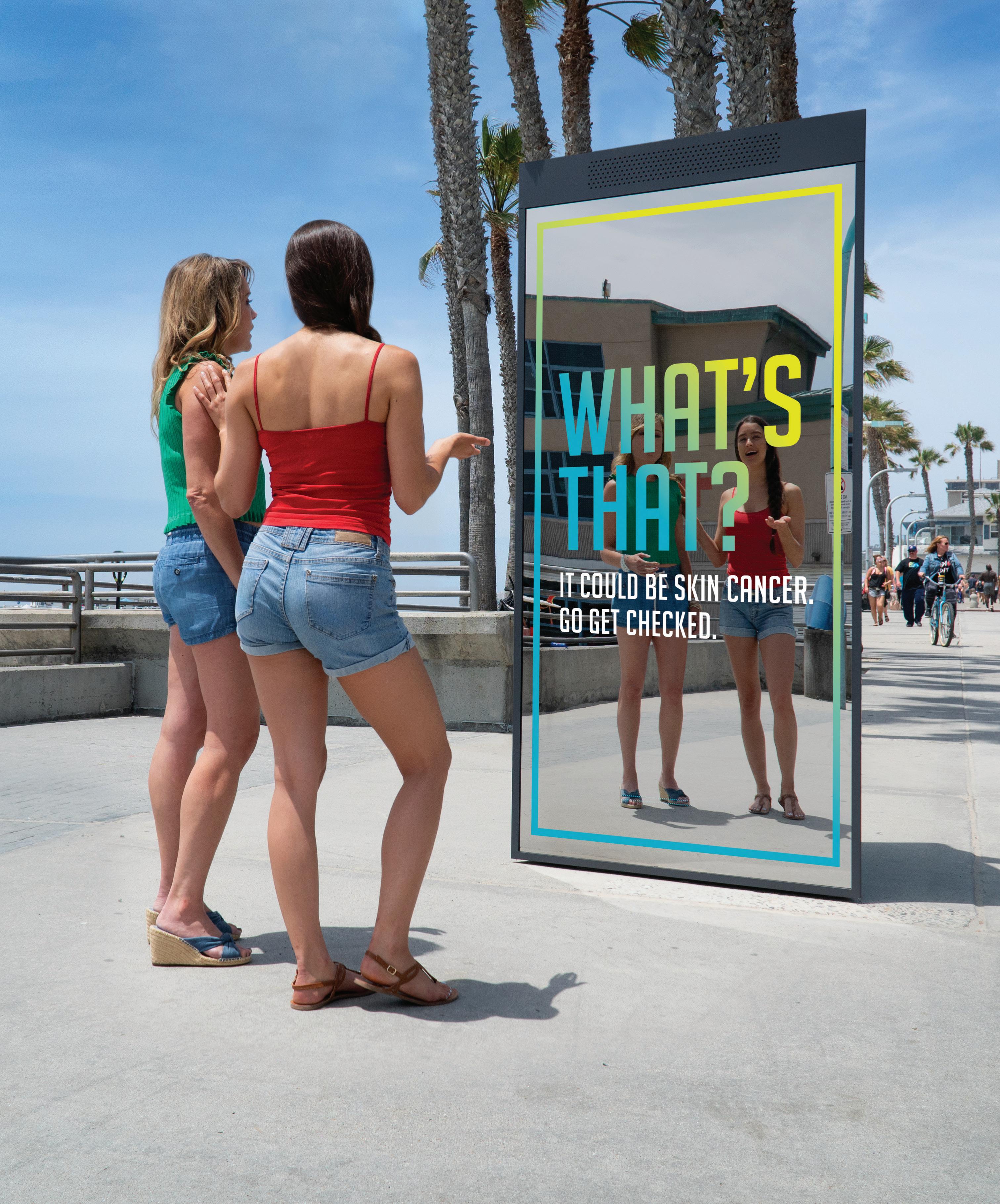
More than 2 people die from skin cancer every hour. See something new, changing or unusual? It could be skin cancer. Check yourself for The Big See today.

OFFICES
722 W. Highway 22
P.O. Box 220
Wewahitchka, FL 32465
850-639-2216 or 800-333-9392
9434 Highway 77 Southport, FL 32409 850-265-3631 Outages: 800-568-3667
6243 E. Highway 98 Panama City, FL 32404 850-481-1188
www.gcec.com
CEO/GENERAL MANAGER
John Bartley
TRUSTEES
President Dwight Van Lierop
Vice President Betty Moore
Secretary/Treasurer Jimmy Black
Rupert Brown
Robert Byrd
Carl Goodson
Eddie Jones
Pat Patterson
Patrick Pitts
Trustees normally meet at 12:30 p.m. CDT the third Tuesday each month.
The mission of GCEC: Fulfilling the changing needs of our membership and communities by providing costeffective, reliable and safe utility services through a dedicated and responsive workforce.
GCEC President’s Message
3 Smart Home Technologies to Help You Save Energy
Smart technologies make our homes more comfortable, convenient and energy efficient. By connecting to your home Wi-Fi network, smart devices automate everyday tasks like lighting, heating, cooling and home security—they can even communicate with other smart devices in the home.
While not all smart home products are specifically designed with energy savings in mind, there are several smart technologies that can help you lower home energy use. Here are the top three smart home devices to help you save.
Smart Thermostats
Smart or not, your thermostat is the most effective tool for controlling energy use, as heating and cooling typically account for the largest portion of energy bills. Smart thermostats allow you to adjust the indoor temperature through an app, giving you full control from anywhere on the go. Many smart thermostats include learning capabilities and adjust the thermostat based on previous behavior and patterns.
According to the Department of Energy, smart thermostats can reduce heating and cooling bills by more than 8% annually. With models as low as $65, they typically pay for themselves in one year.
Smart Lighting
Access your account and report power outages 24 hours a day, seven days a week, by using our app, logging on to www.gcec.com or calling any of our offices at the numbers listed above.
Smart LED bulbs use less electricity than traditional bulbs and can be scheduled or turned on or off remotely through a smartphone app. Smart bulbs are available in a range of shapes, brightness levels, colors
and more, so shop for the products that work best for your home lighting needs.
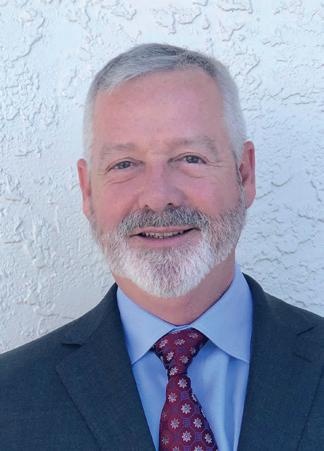
Many smart bulbs include motion sensors that turn on or off based on room activity, further optimizing home energy use. If you’re new to smart lighting, try a home starter kit. Prices for kits range from $70 to $300-plus depending on how many bulbs you need.
Smart Plugs
Smart plugs are inexpensive gadgets that can help you save energy. Many electronic devices consume power even when they are turned off, known as “phantom load,” can take a toll on your energy bills. Smart plugs are simply plugged into an electrical outlet and connected to your Wi-Fi network. When set up, the smart plug can cut or restore power to nonsmart devices, like coffee makers, phone chargers and other items that draw phantom load.
Many smart plugs can be paired with popular smart hubs, like Alexa or Google Nest, or controlled through the plug’s associated app. Smart plugs are simple to use. A set of four costs as little as $25. If you’re looking for new ways to save energy, try these budget-friendly, convenient smart home technologies.
Dwight Van Lierop
